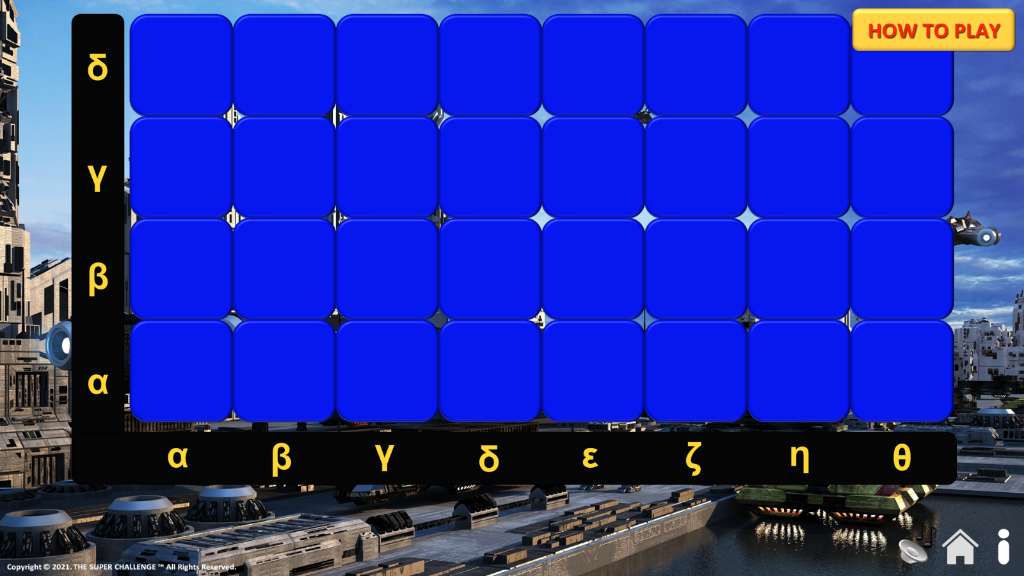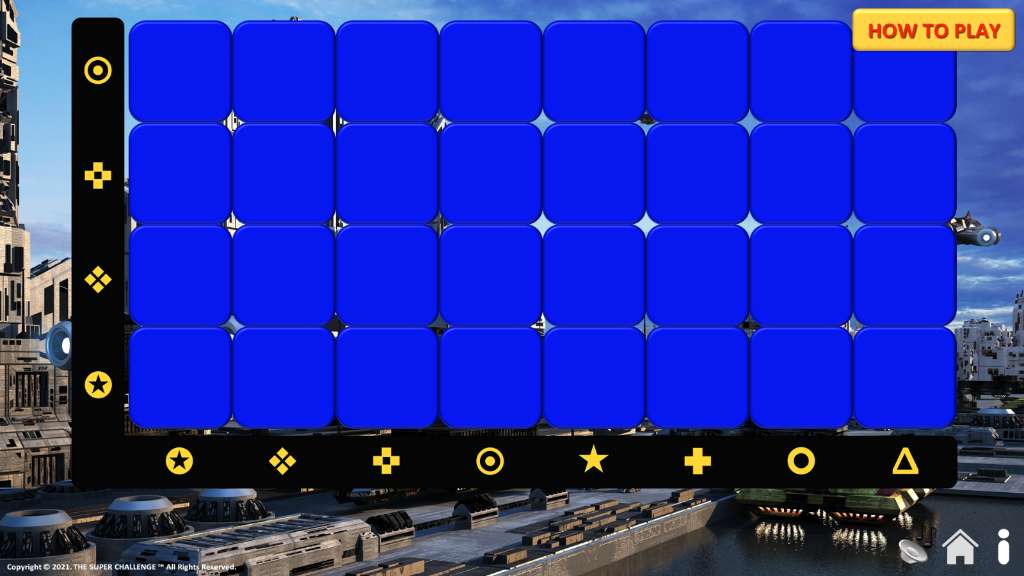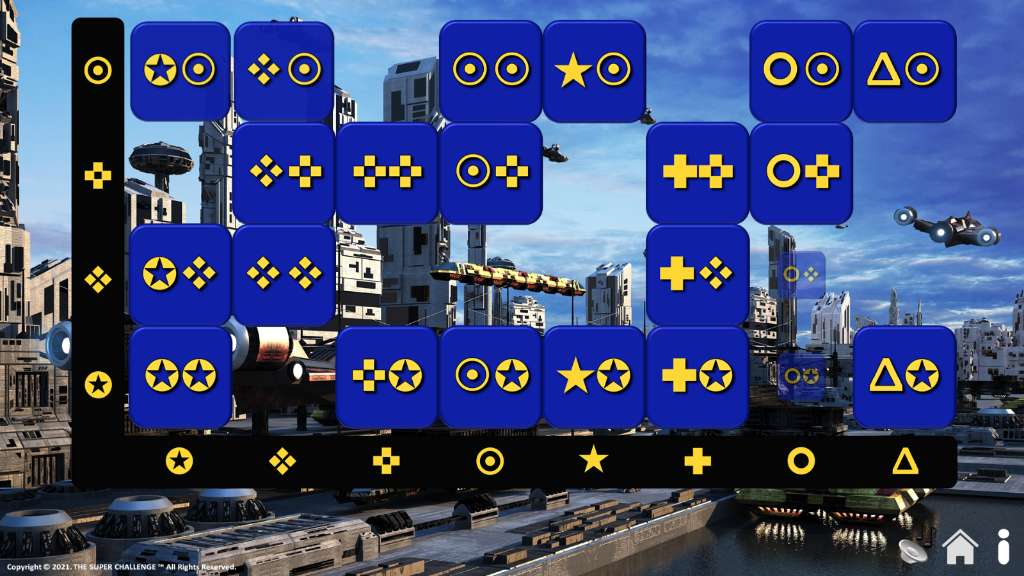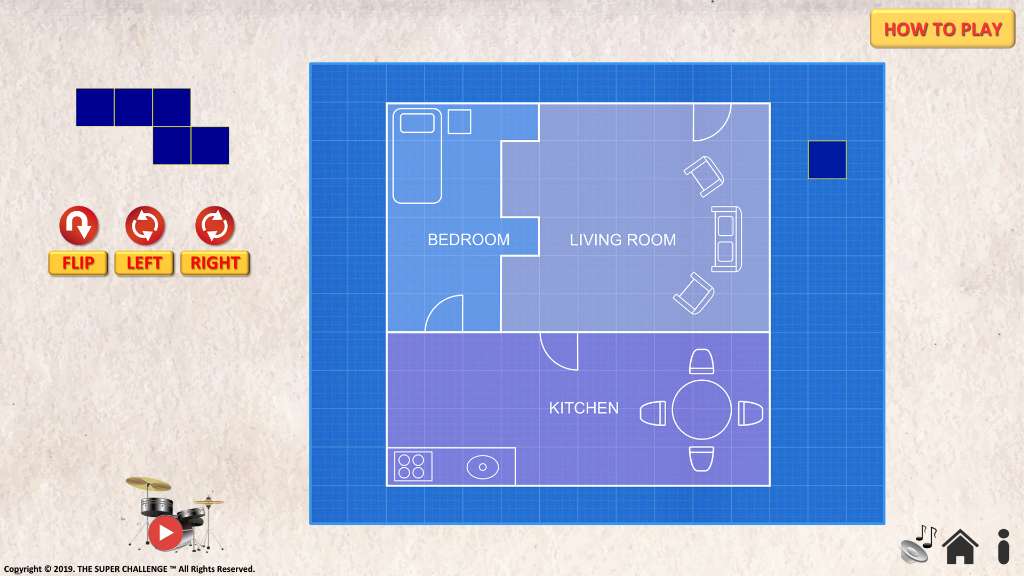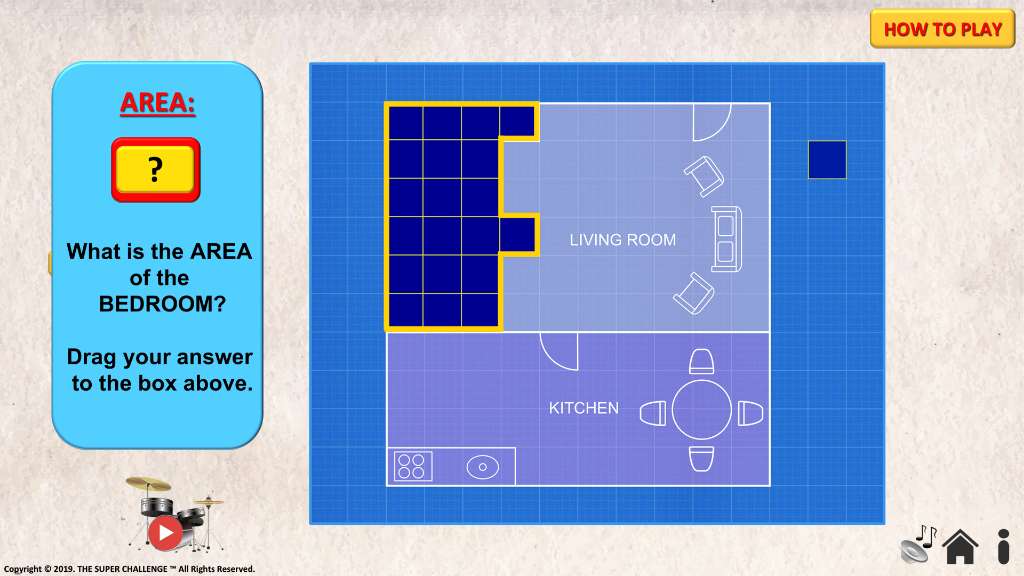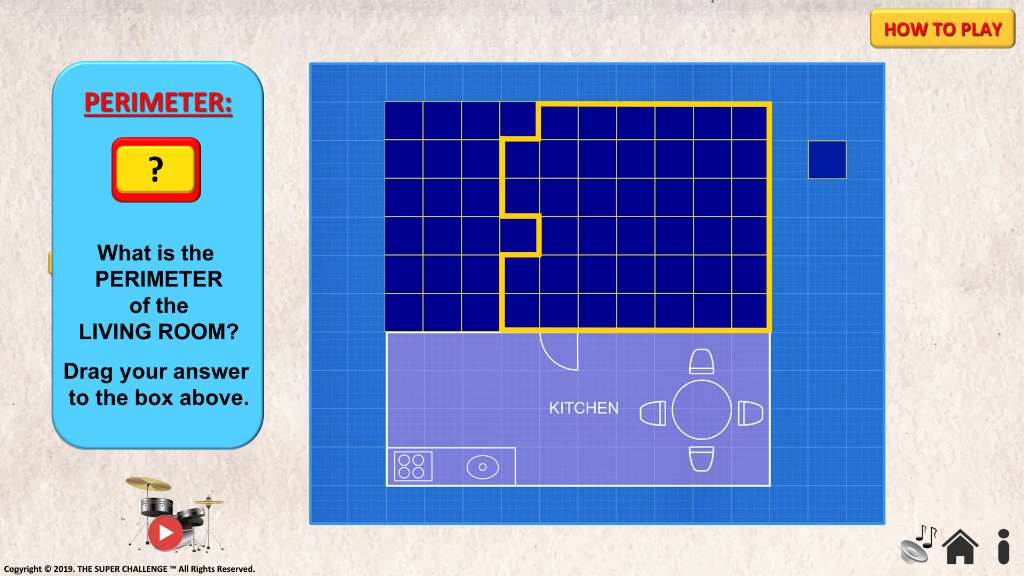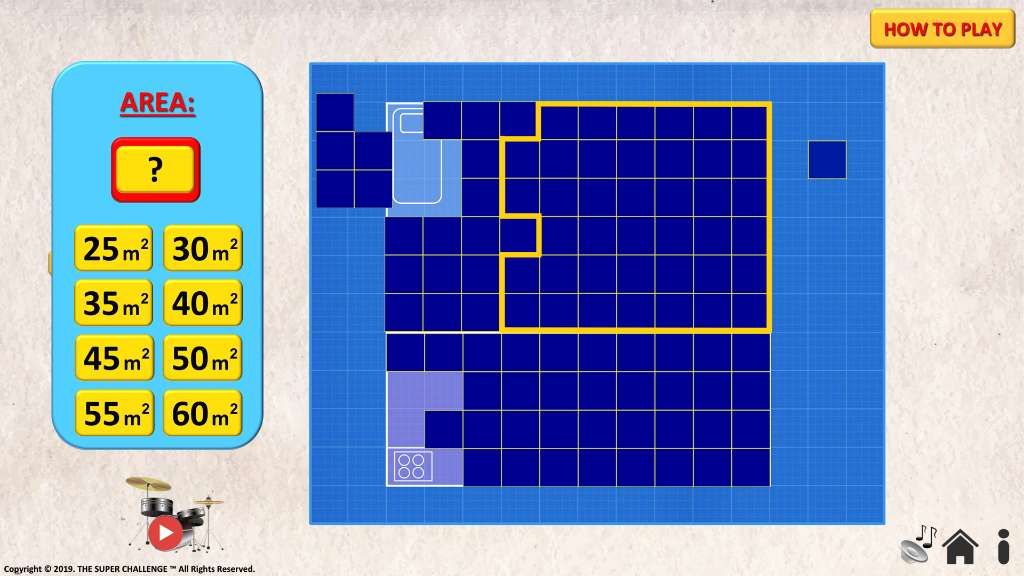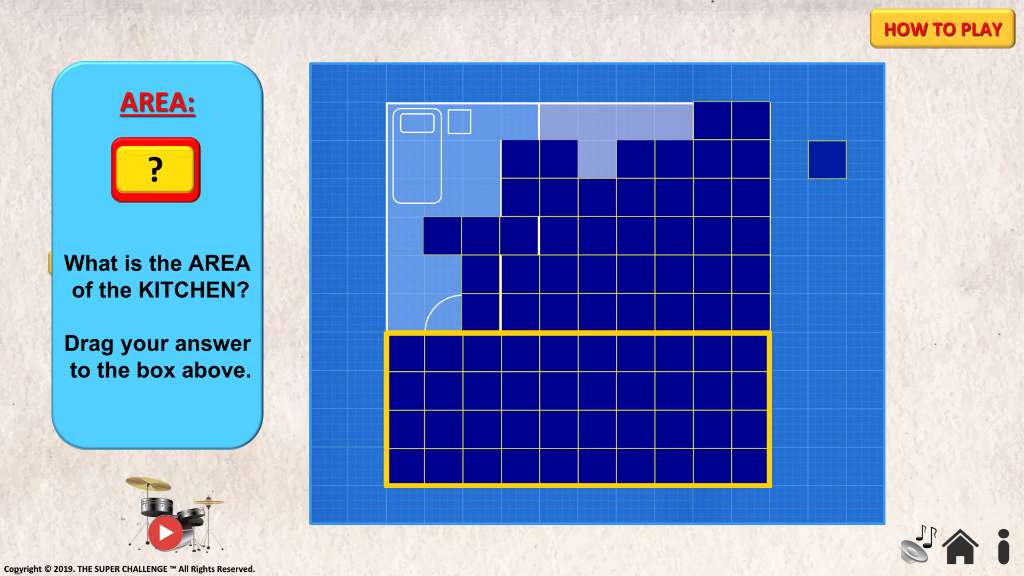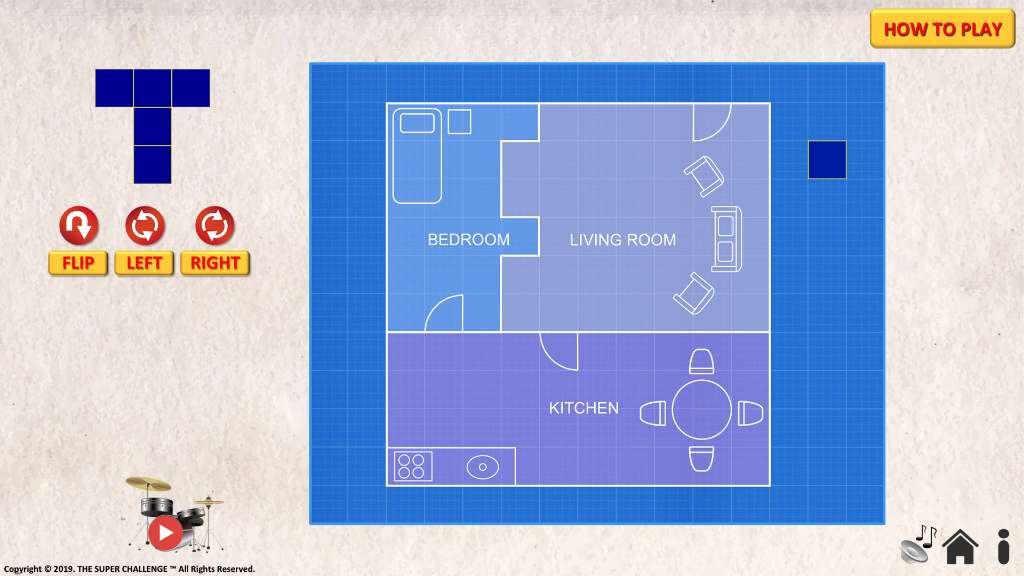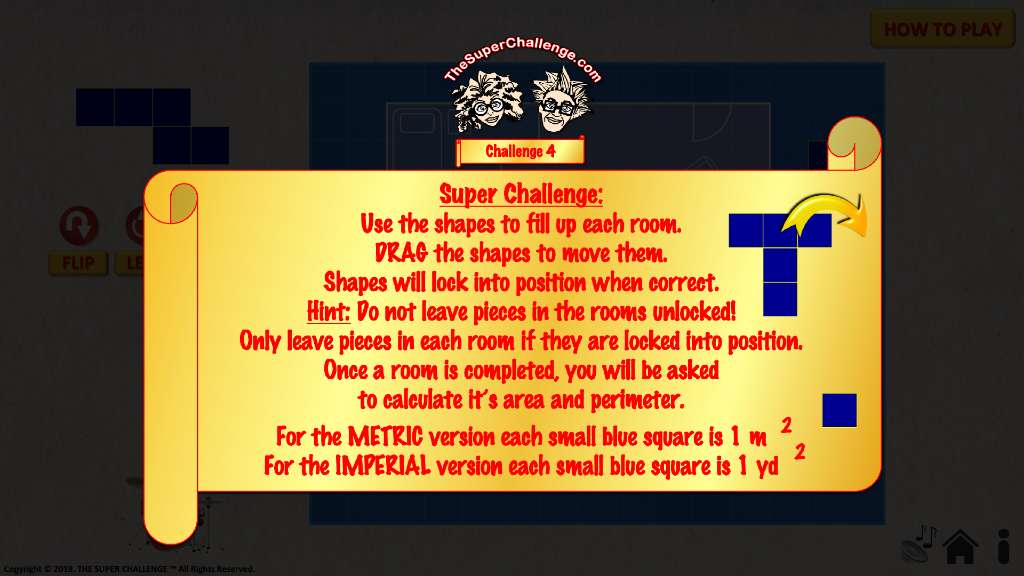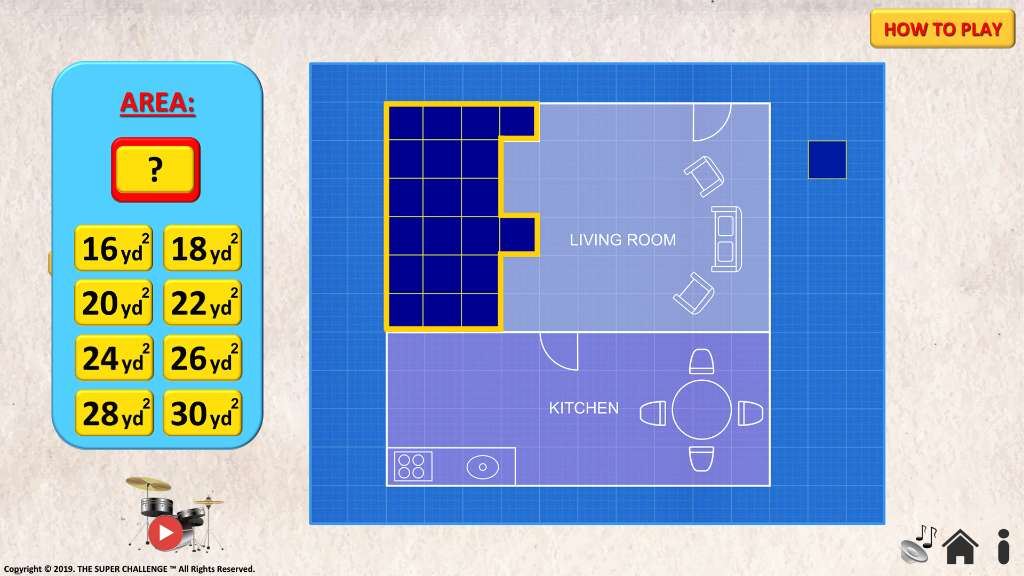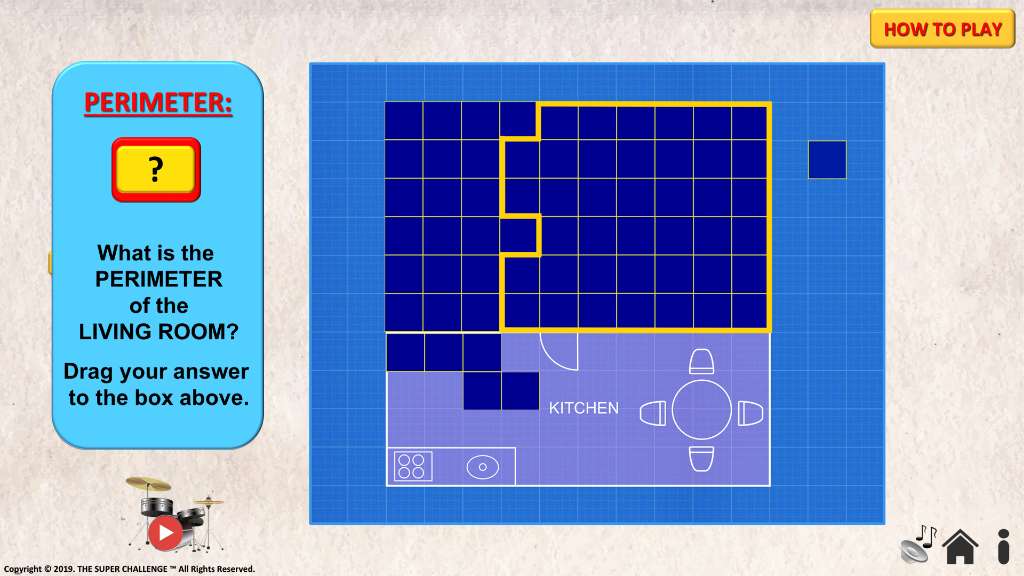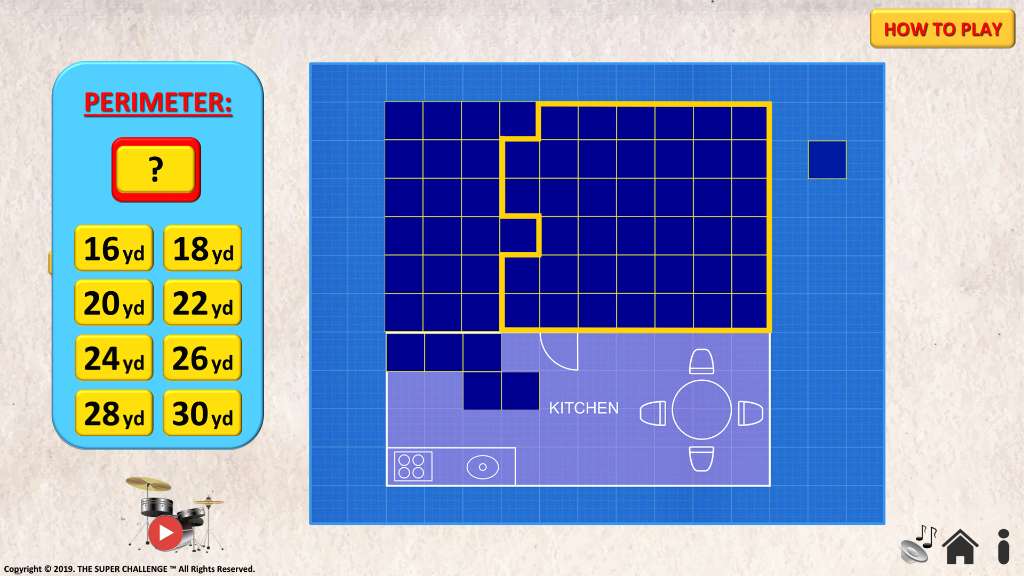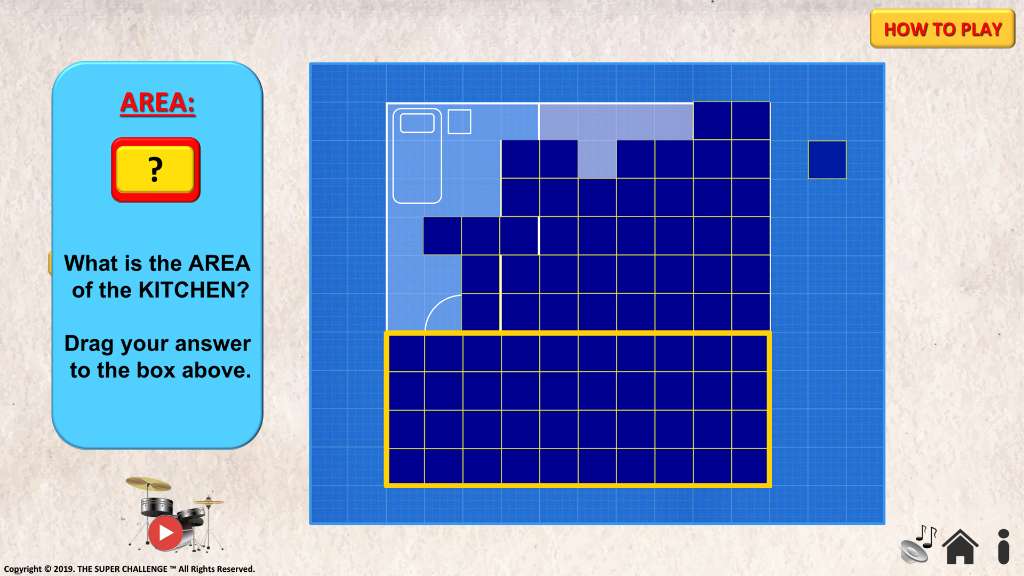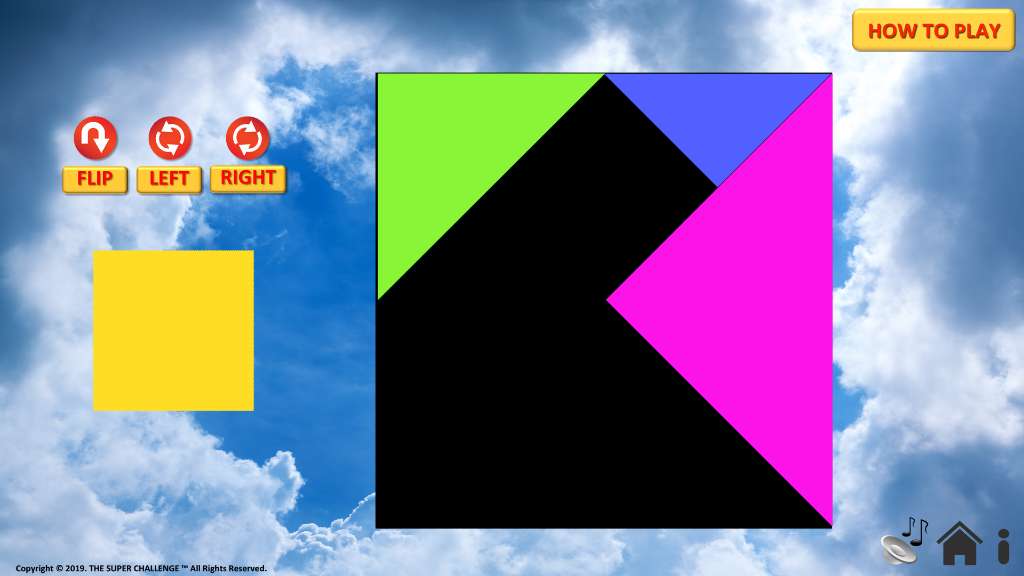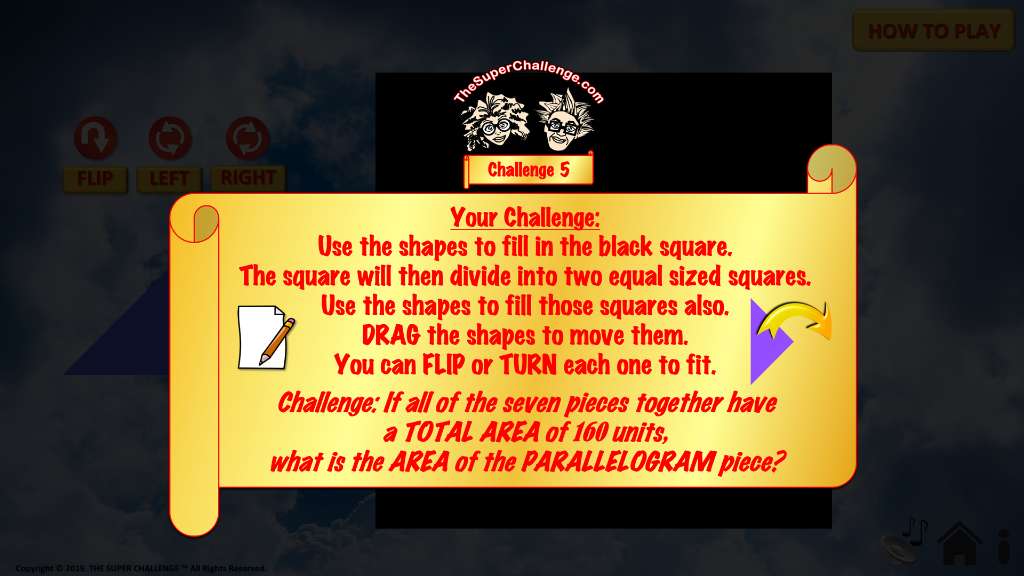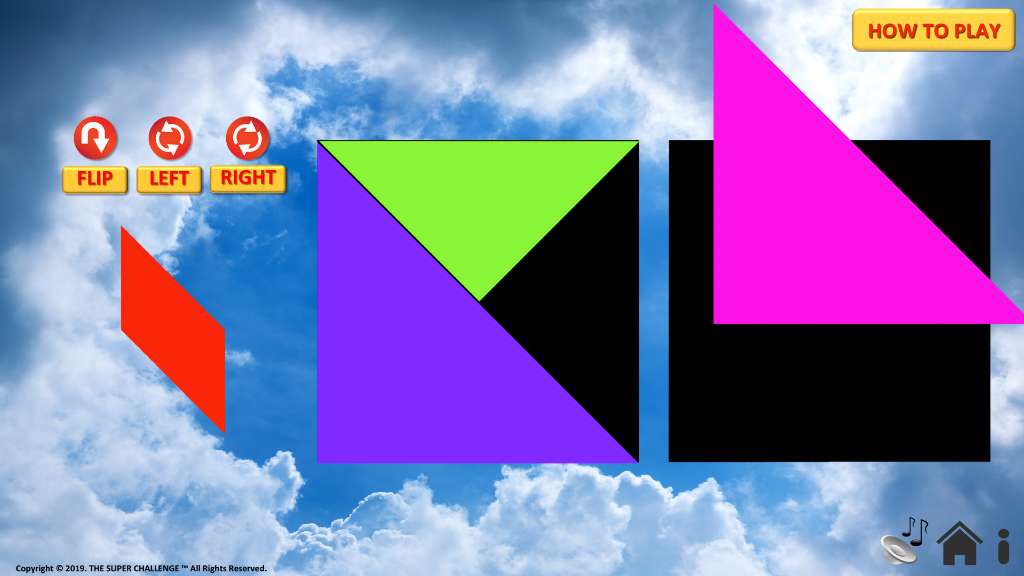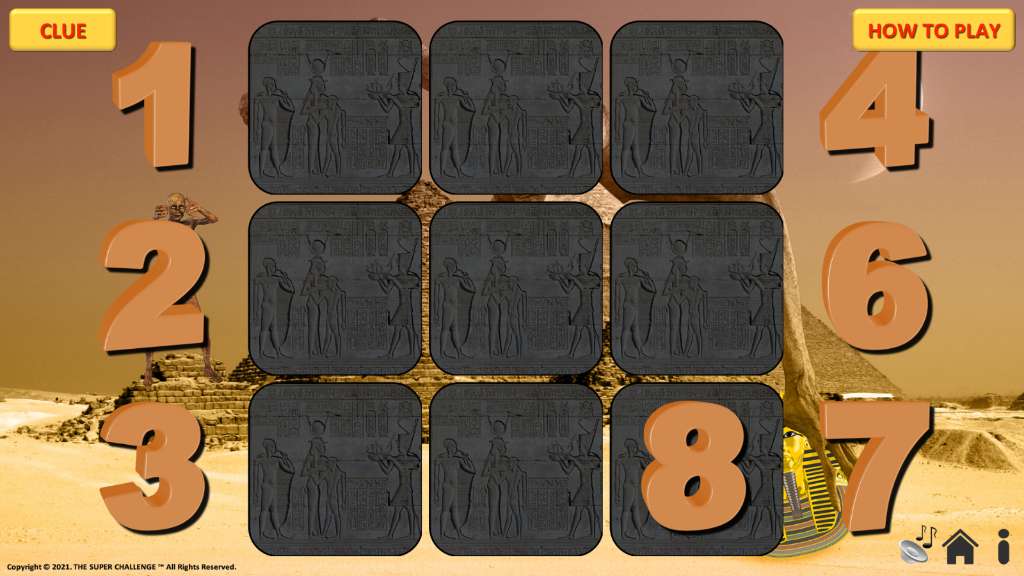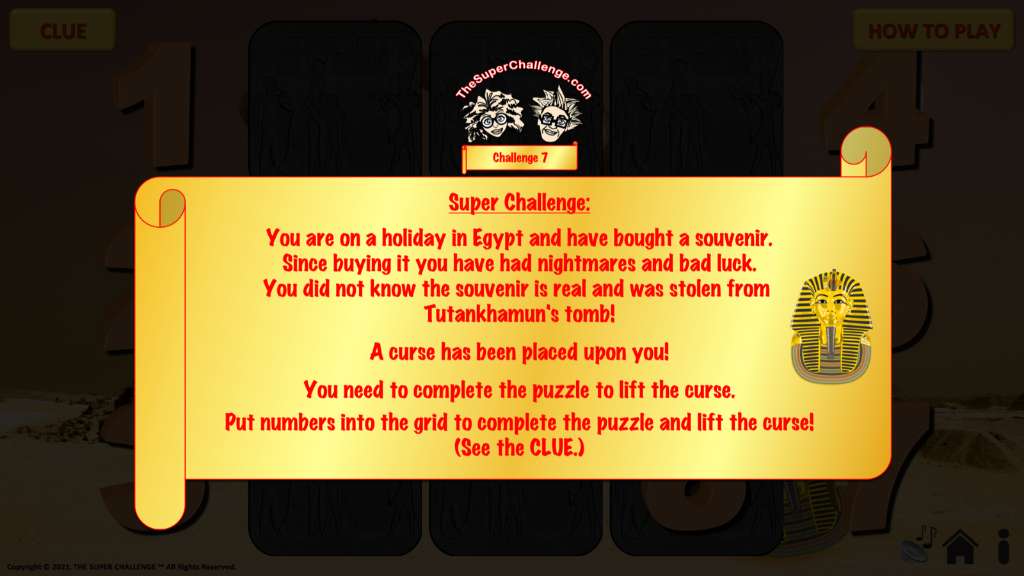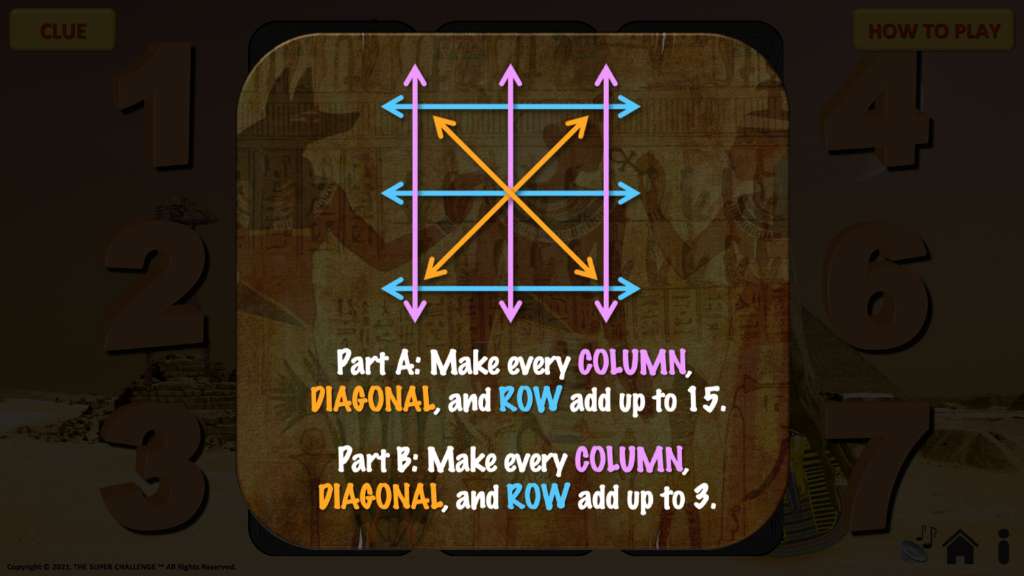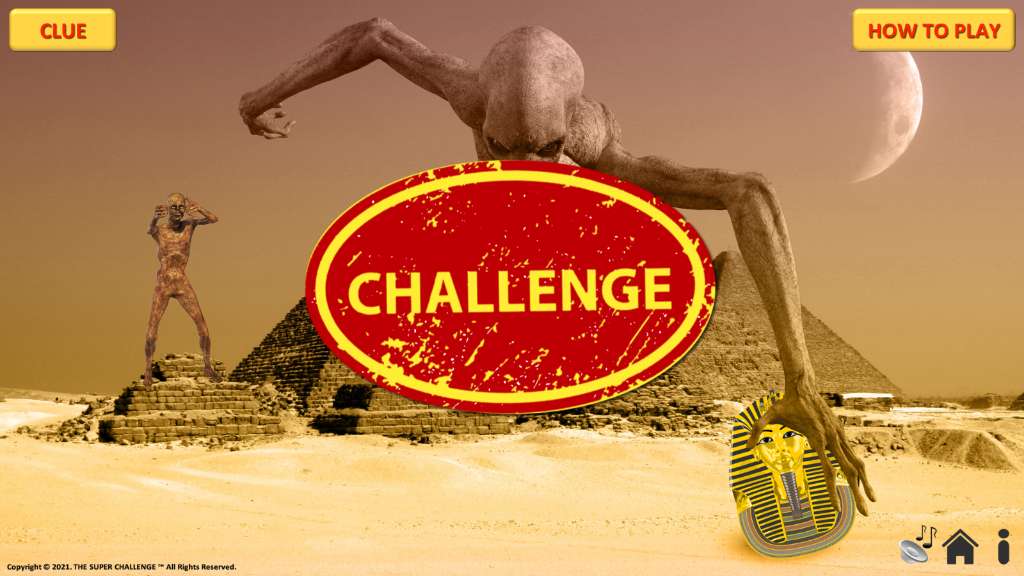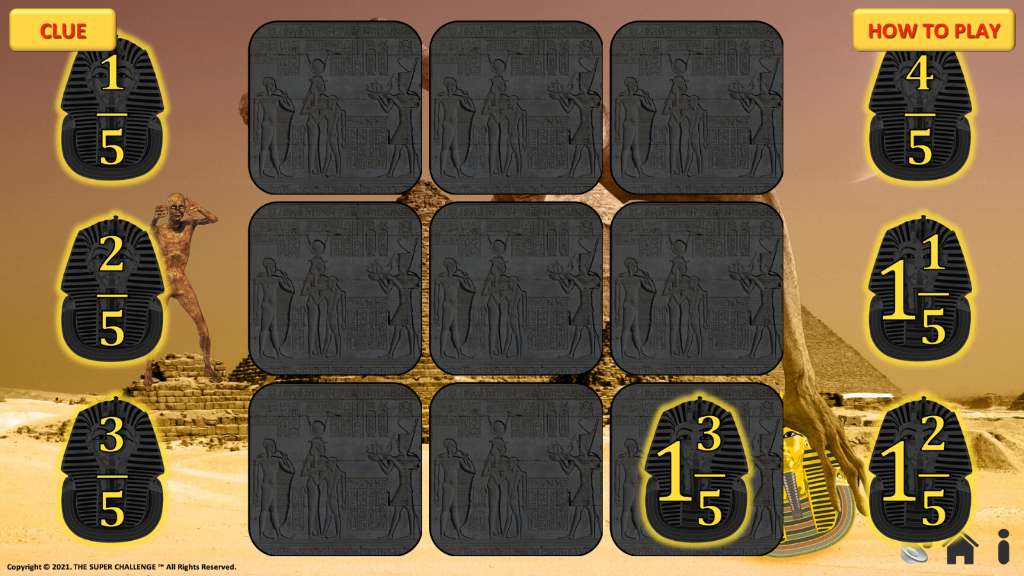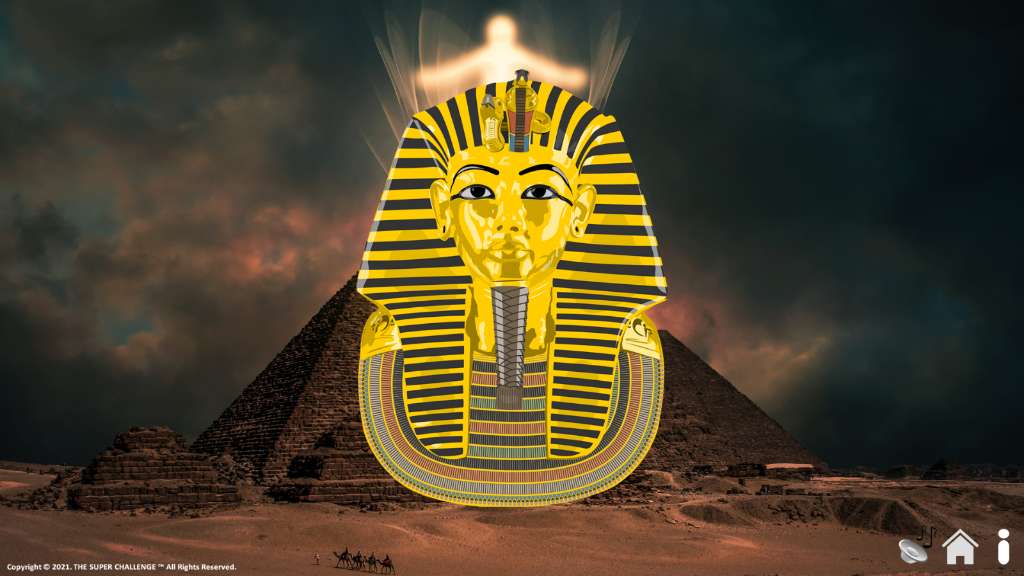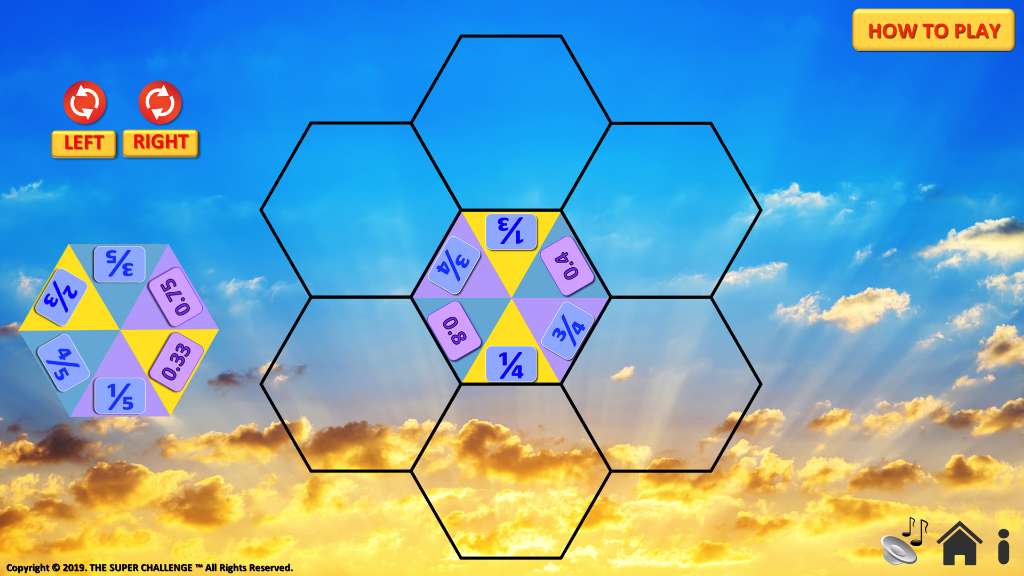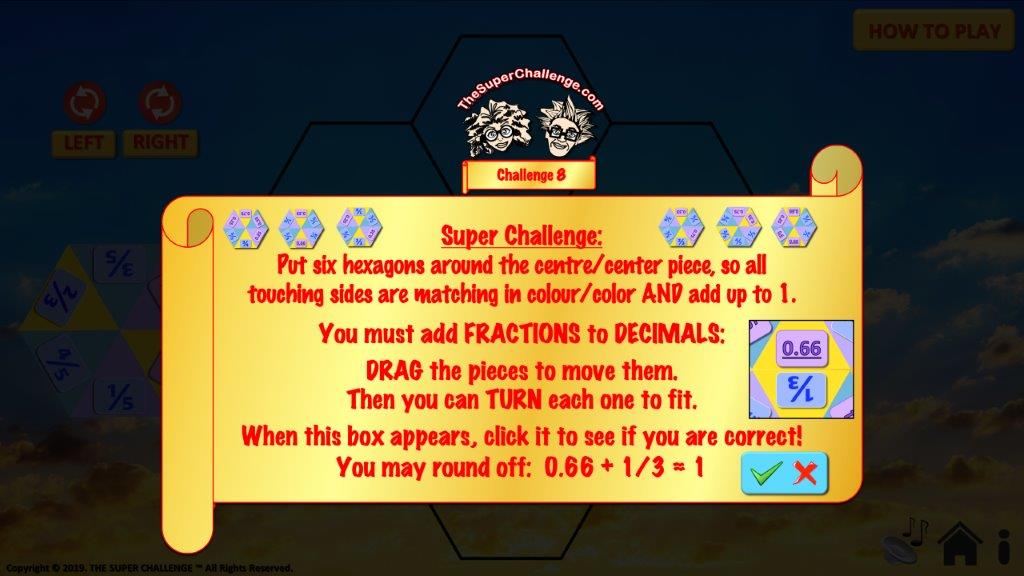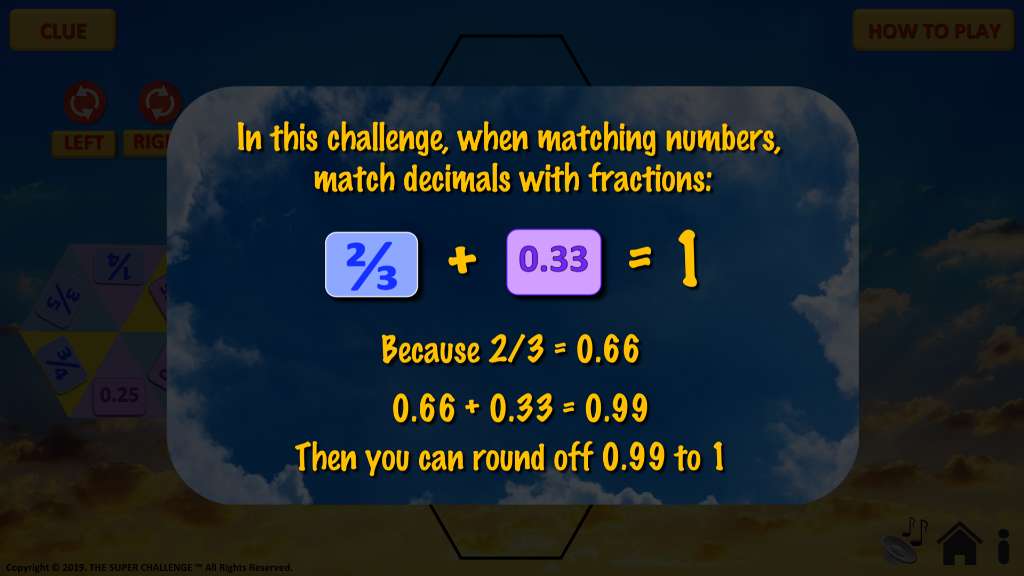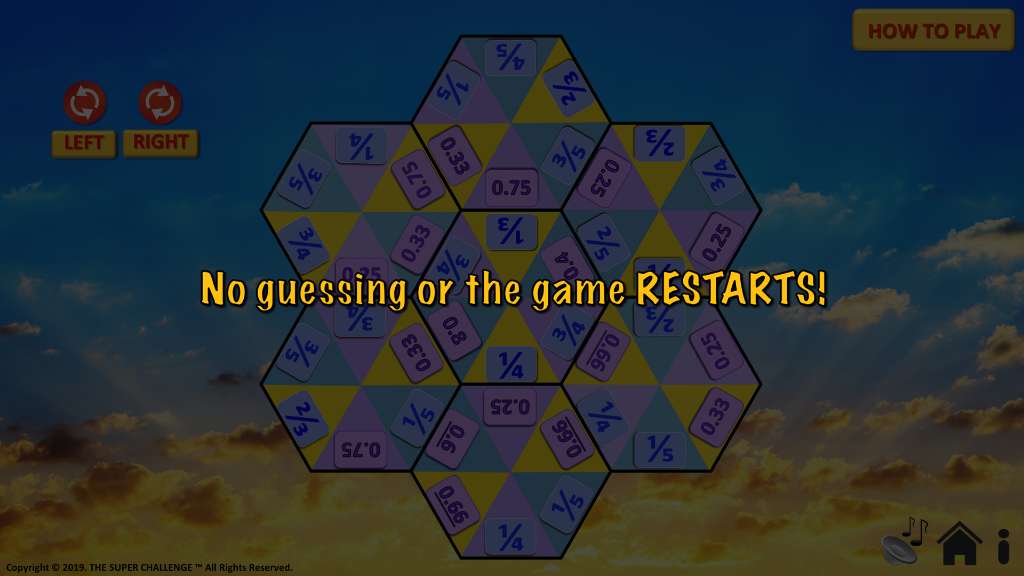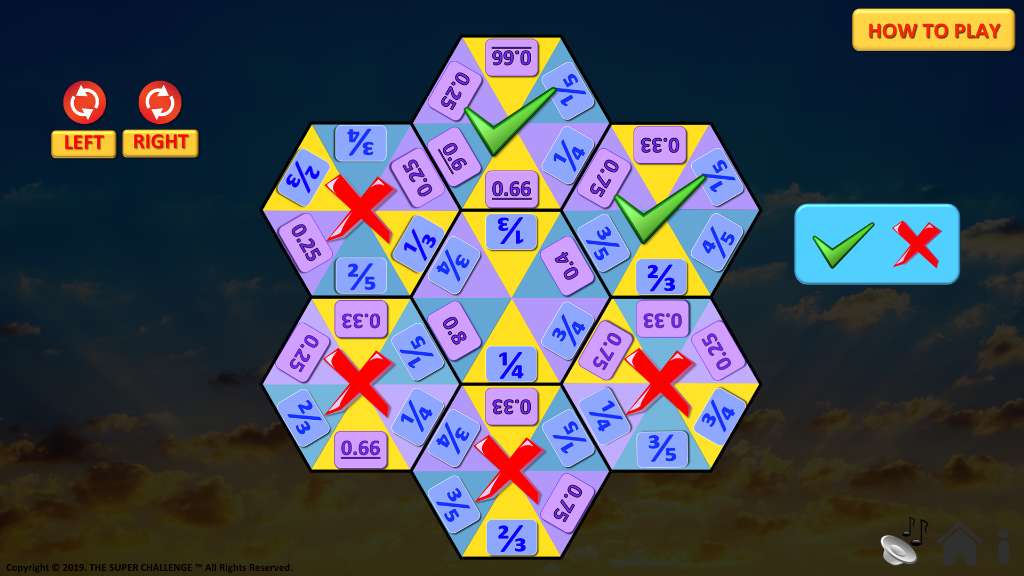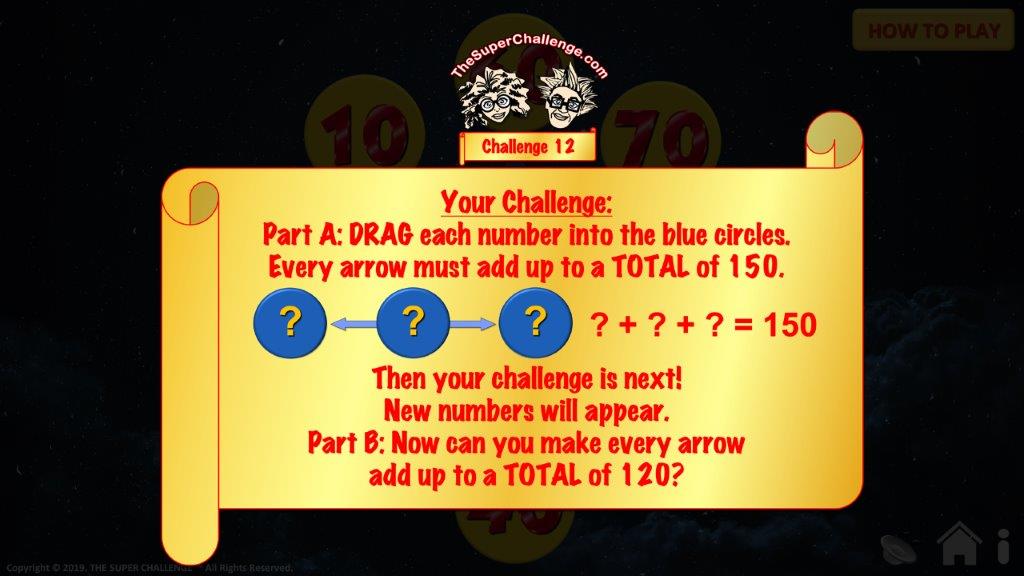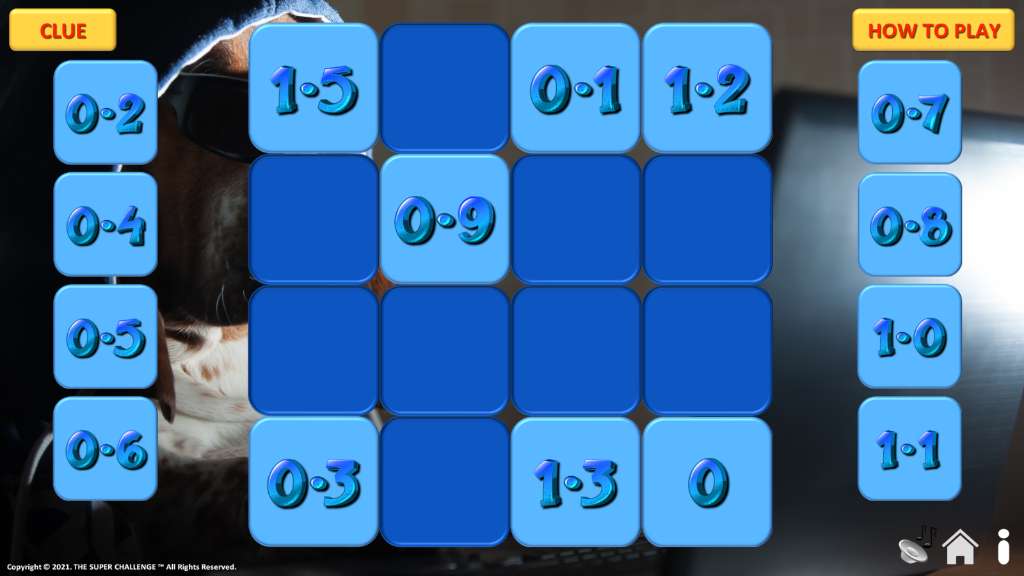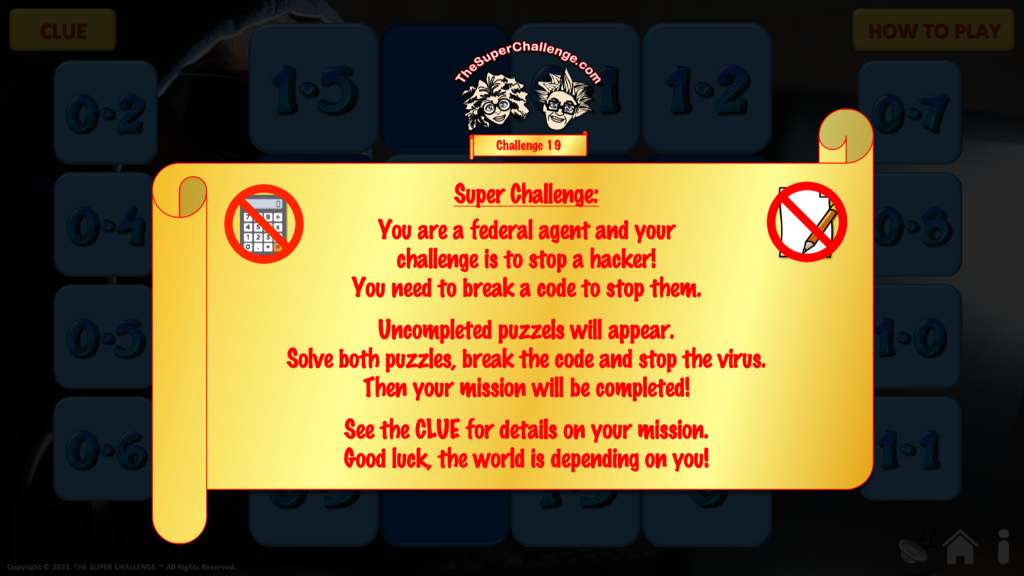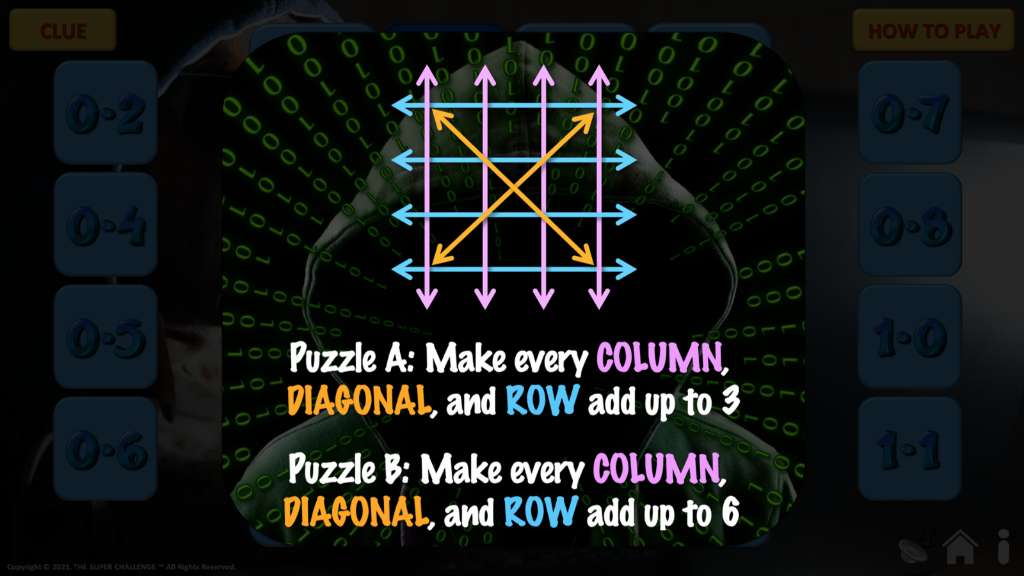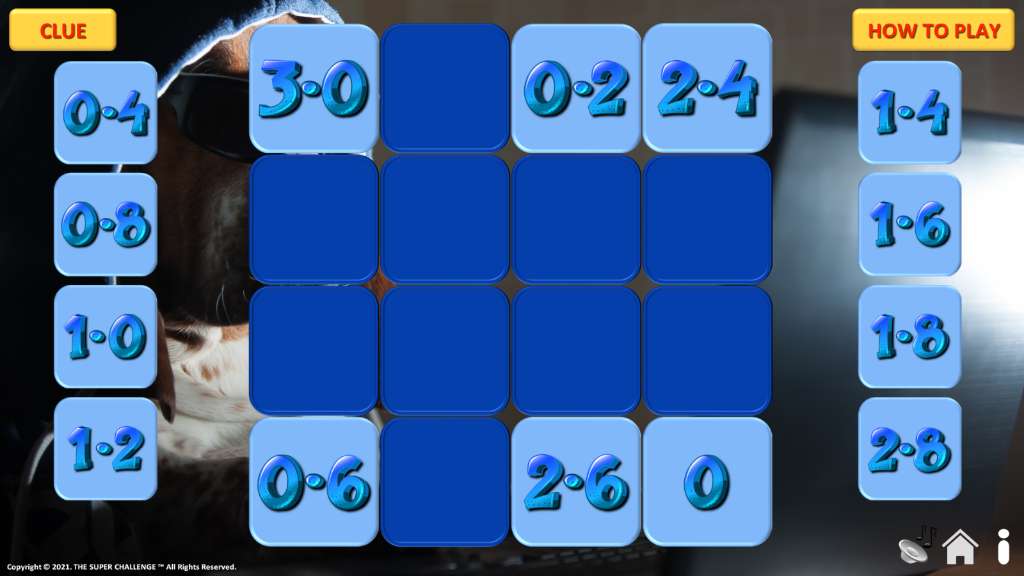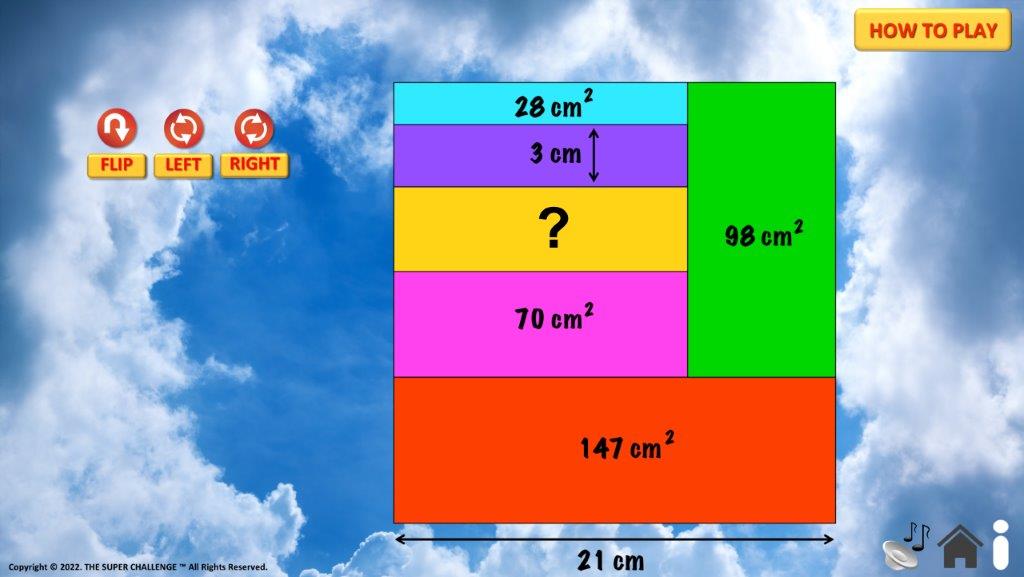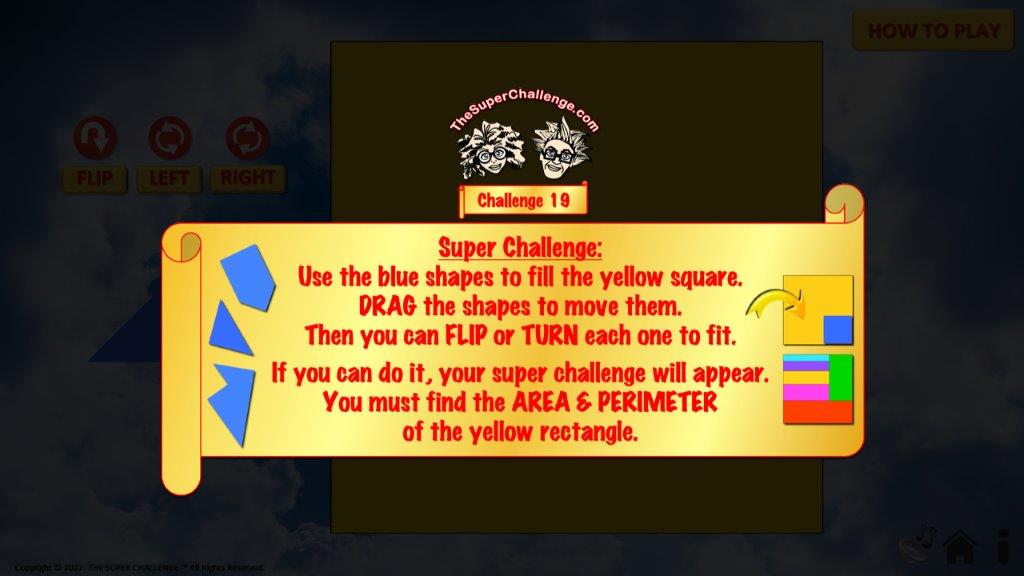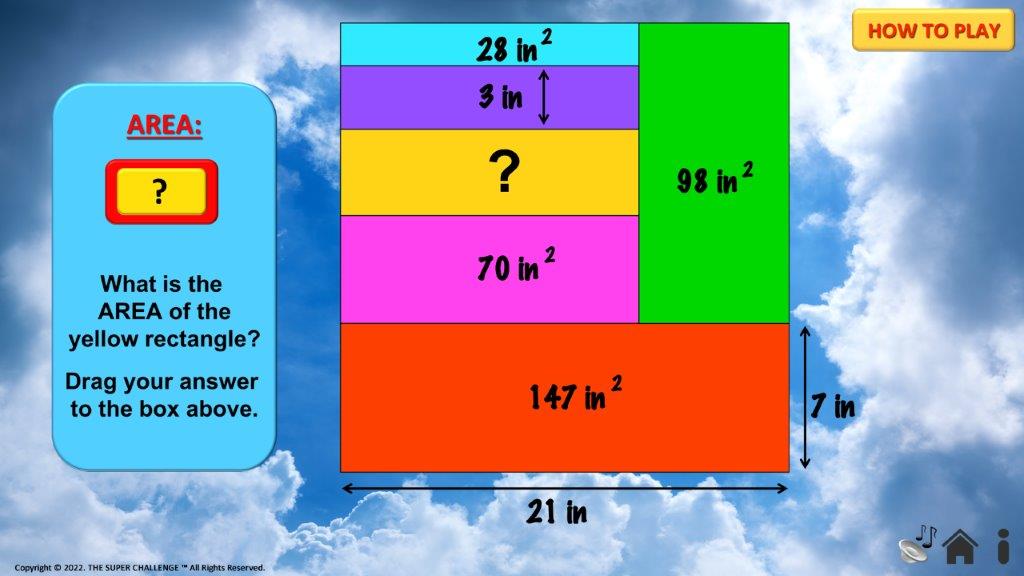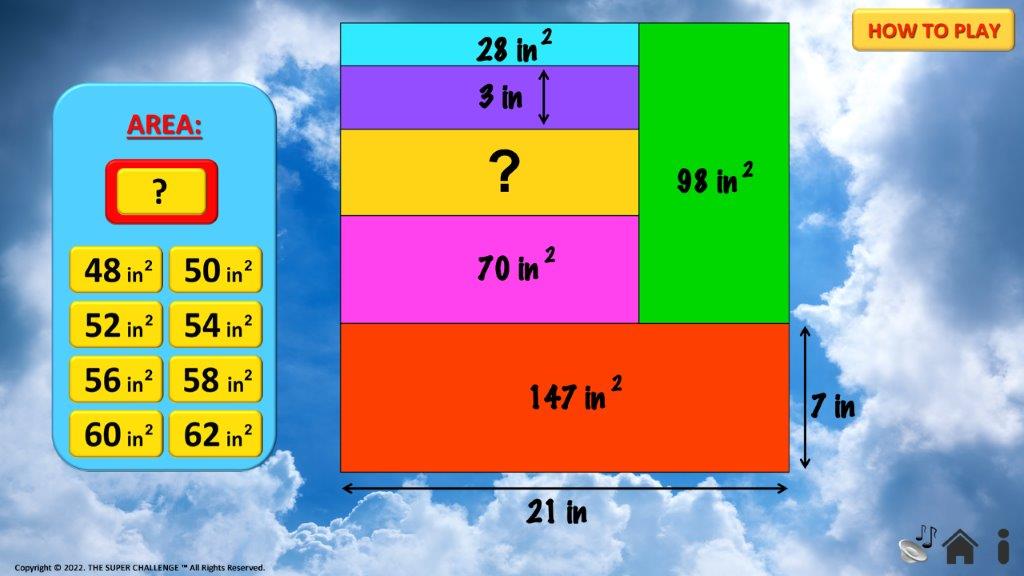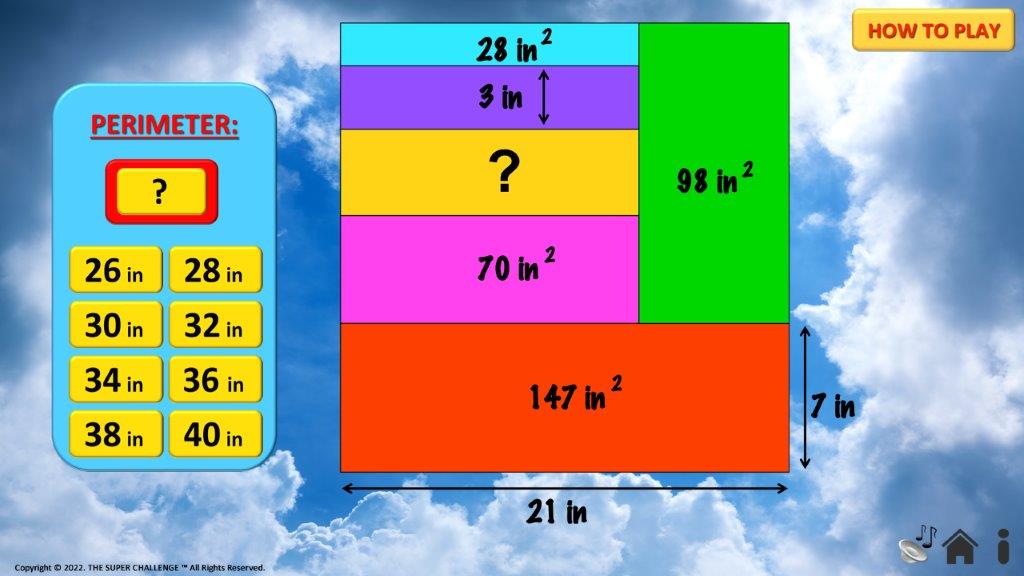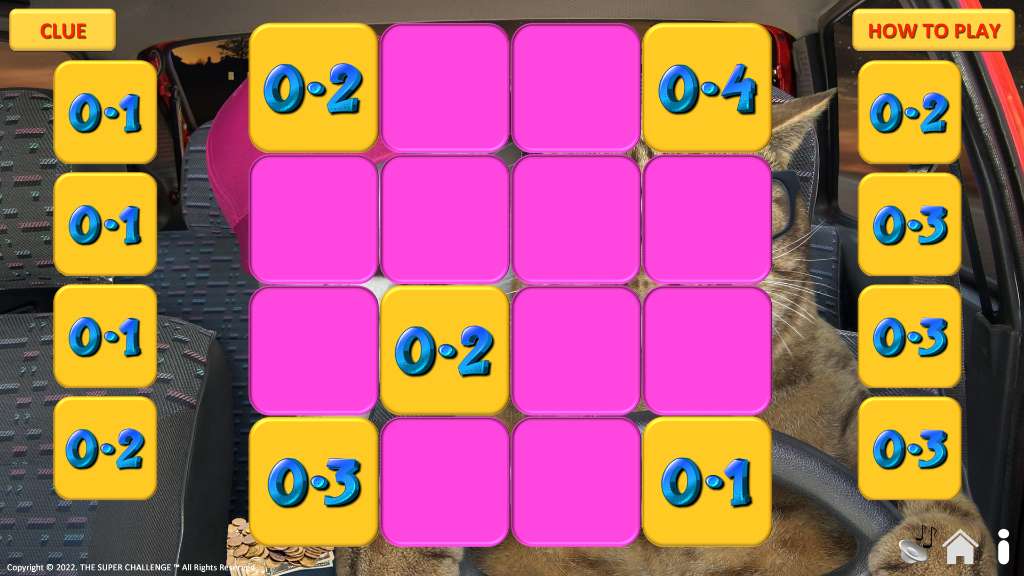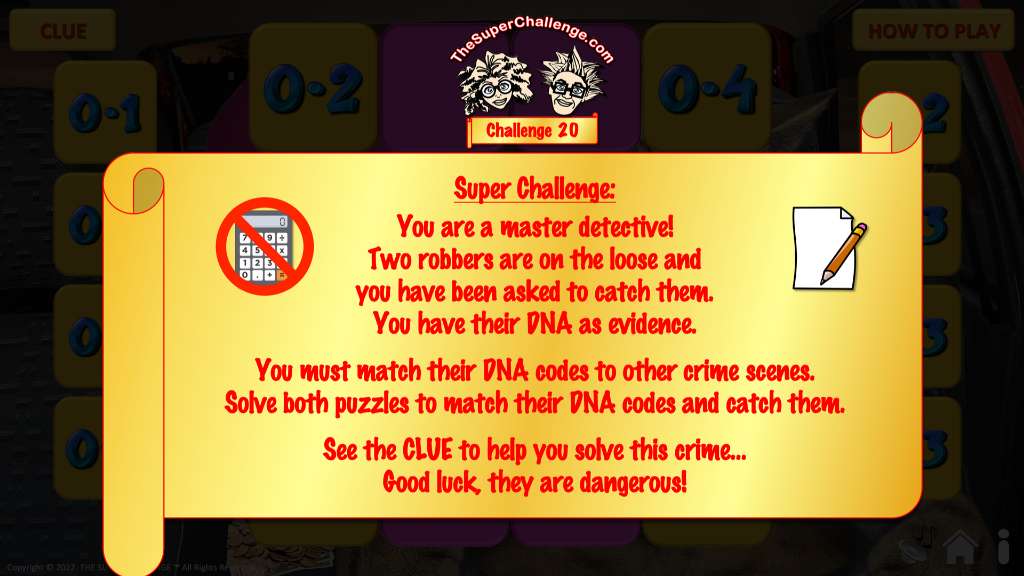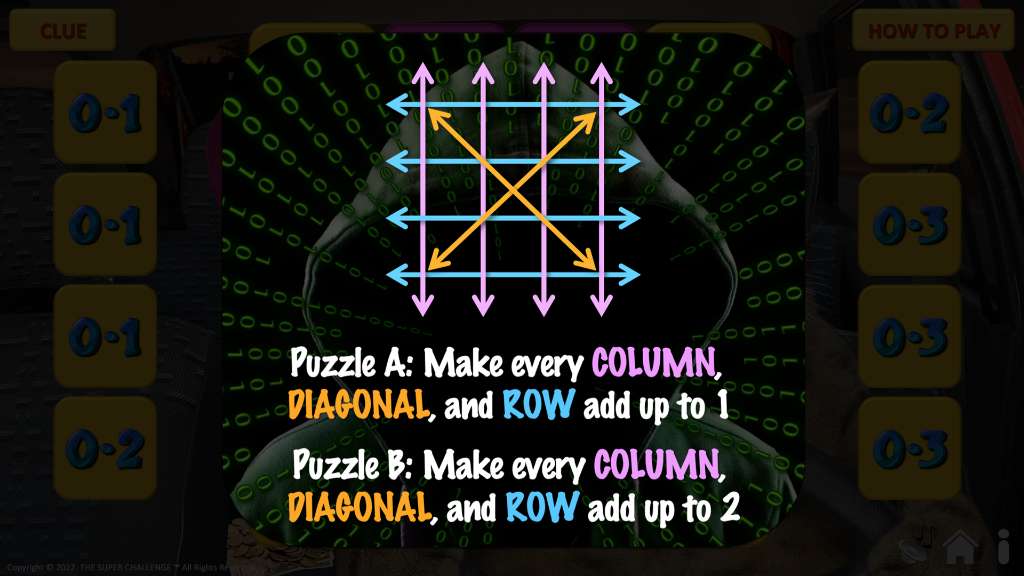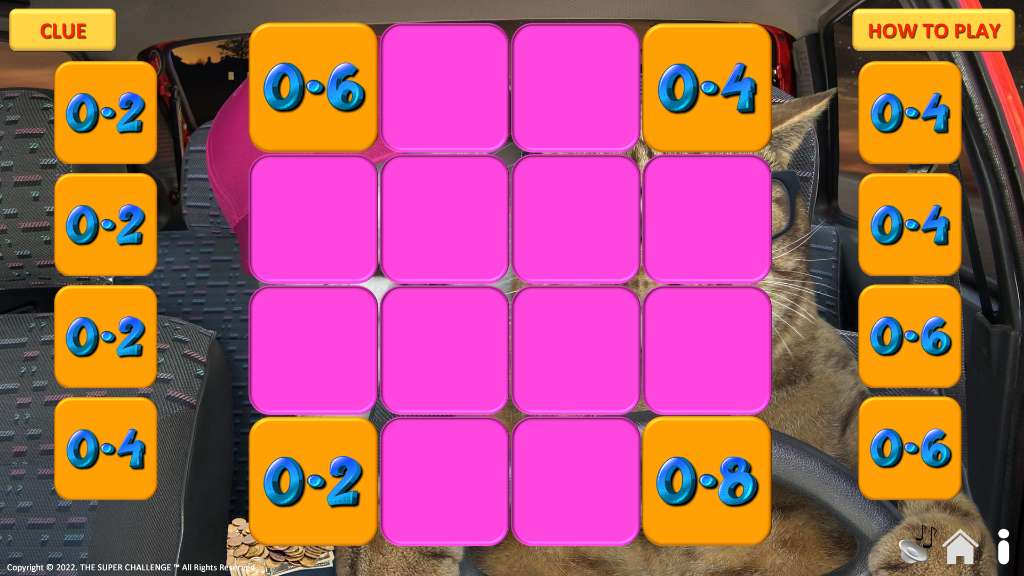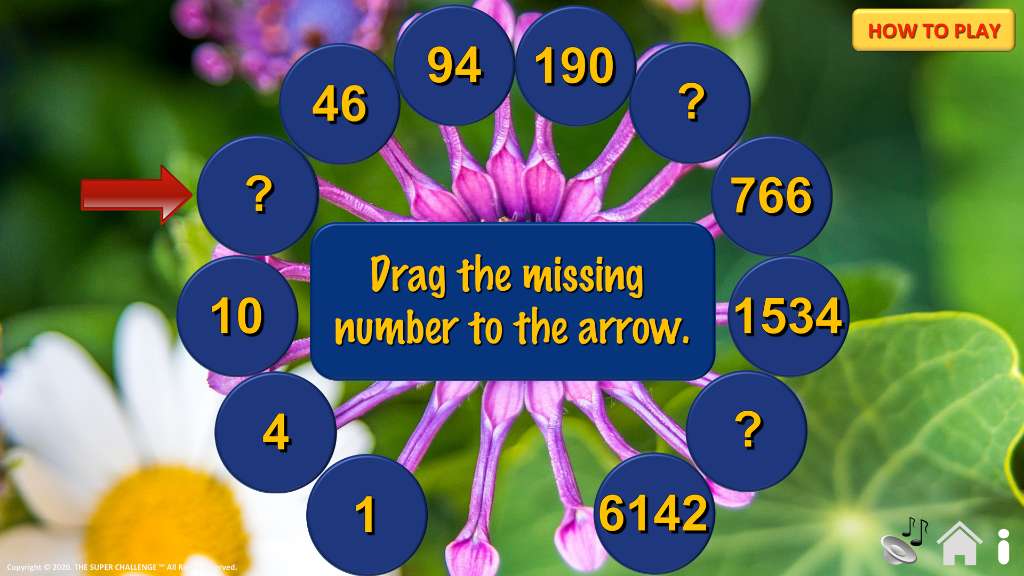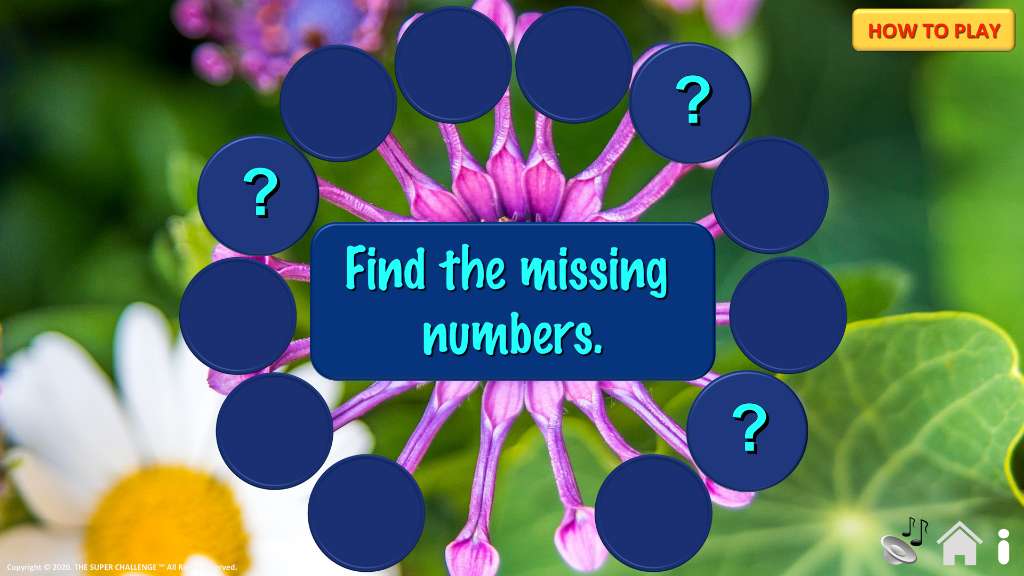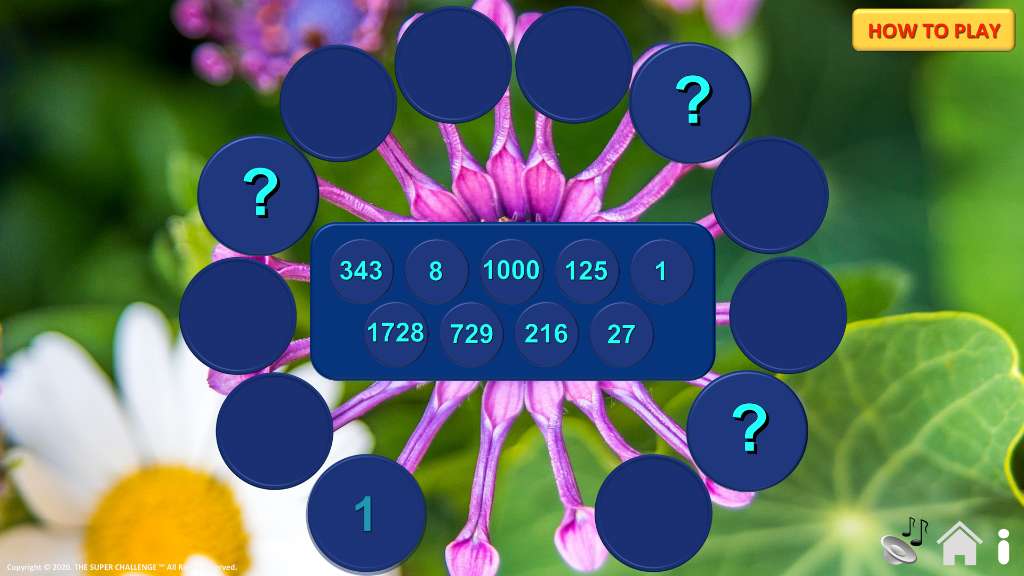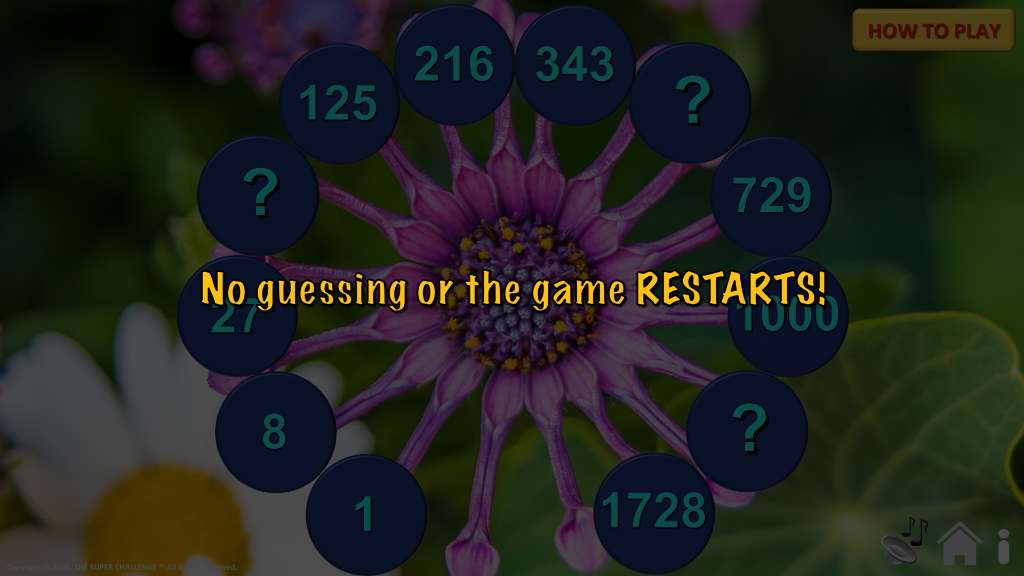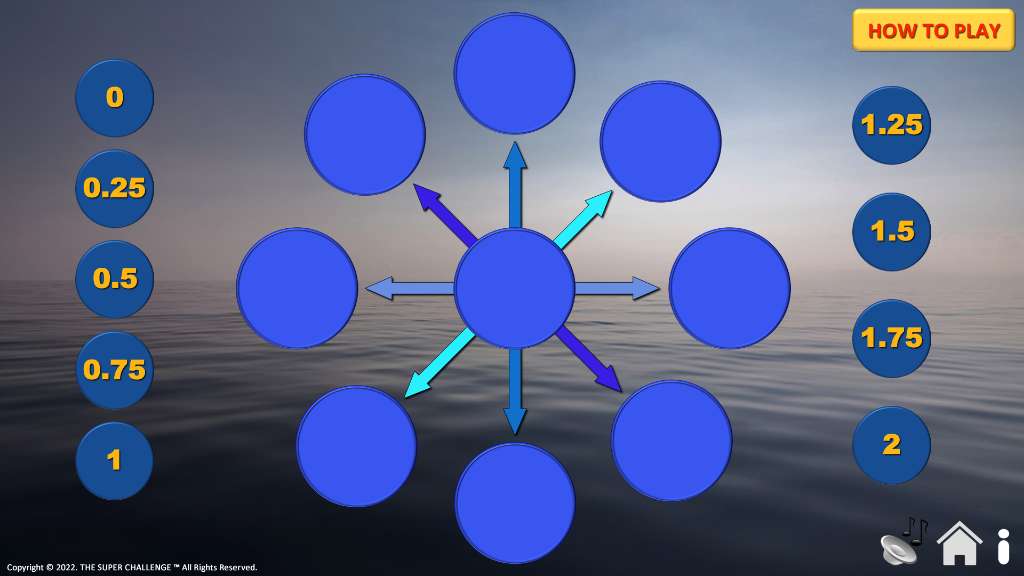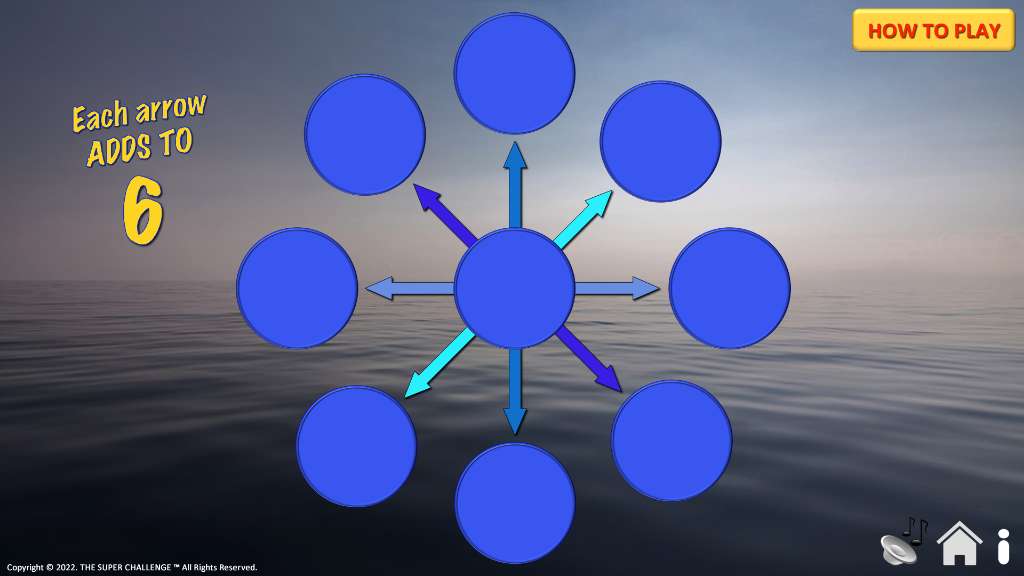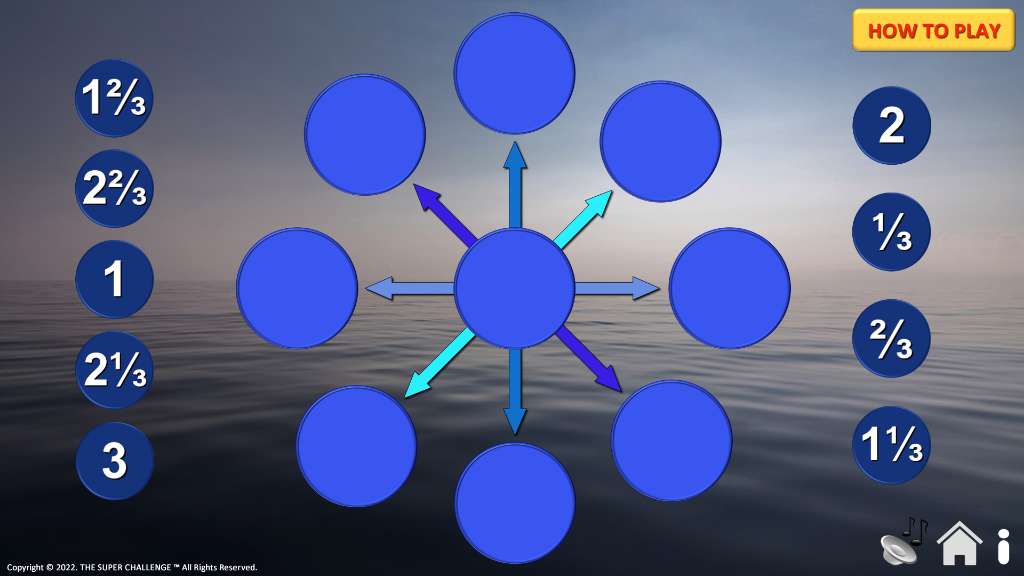Warning: Games are not designed to be played using the Safari browsers.
Games should only be played using a web browser such as Chrome, Firefox or Microsoft Edge. Please open this website using one of these browsers.
It is also advised you have the latest version of the Chrome, Firefox or Microsoft Edge web browsers.
Majors Explained

PLANET X (4/10)
GAME PLAYS ON: PC, LAPTOP & TABLET
Planet X - Game Description
Ages: 13 – 101 years old
This game helps parents and other adults to become familiar with the Cartesian coordinate system and ordered pairs.
If played just for fun, brain teaser difficulty level: 4/10
Set on an alien planet with great sound effects, it is an easy and fun way for parents to learn about, or brush up on, the Cartesian coordinate system and ordered pairs.
These mathematical concepts are needed for Grade 4, 5 & 6 in Australia, Canada, and the U.S.A. (Years 5, 6 & 7 in England.)
Teacher Reference:
(ACMMG090): Interpret information contained in basic maps.
Focusing on the Cartesian Coordinate System and Ordered Pairs.
Ref: Australian Curriculum Mathematics.
How To Play:
You are in an alien city on another planet. Can you read the city map when it’s coded in another language? As pieces appear, put them onto their correct positions on the grid. Do this until you have done them all! Make sure you drag each one carefully. A steady hand is necessary. If you get two answers wrong, you must START AGAIN!
TRIAD (6/10)
GAME PLAYS ON: PC, LAPTOP & TABLET
Triad - Game Description
Ages: 13 – 101 years old
This game helps parents and other adults teach students addition of fractions.
If played just for fun, brain teaser difficulty level: 6/10
It explores the relationship between families of fractions, addition of fractions and equivalent fractions.
The game involves a triangular puzzle. It has three parts, with the final part a real challenge.
These mathematical concepts are needed for Grade 4, 5 & 6 in Australia, Canada, and the U.S.A. (Years 5, 6 & 7 in England.)
Teacher References:
(ACMNA077): Investigate equivalent fractions used in contexts.
(ACMNA078): Count by quarters halves and thirds, including with mixed numerals. Locate and represent these fractions on a number line.
Ref: Australian Curriculum Mathematics.
How To Play:
A triangular pattern will appear. Place numbers into the circles so every straight line adds up to 2. Drag each number to move them. Once you have done them all, your challenge will appear!
PAYDAY (7/10)
GAME PLAYS ON: PC & LAPTOP ONLY
Payday- Game Description
Ages: 13 – 101 years old
This game helps parents and other adults teach students how to find unknown quantities in number sentences involving addition and subtraction.
If played just for fun, brain teaser difficulty level: 7/10
The game is lots of fun as players try to solve a practical number sentence puzzle. Players are presented with number sentences without the symbols “+”, “-” and “=”, making it less confronting and easy to understand.
These mathematical concepts are needed for Grade 4, 5 & 6 in Australia, Canada and the U.S.A. (Years 5, 6 & 7 in England.)
Teacher Reference:
(ACMNA083): Find unknown quantities in number sentences involving addition and subtraction and identify equivalent number sentences involving addition and subtraction.
Ref: Australian Curriculum Mathematics.
How To Play:
It’s payday and time for you to pay your 5 staff $174 each.
Put money in to make each column add up to $174. (A column for each person.)
Money must go in order, from LARGEST to SMALLEST amounts. Only after you have completed ALL columns, click to see if you are correct. If any columns are incorrect, the game starts again! You may use a pen and paper but no calculator!
BUNGALOW – METRIC (4/10)
GAME PLAYS ON: PC, LAPTOP & TABLET
Bungalow - Metric - Game Description
Ages: 13 – 101 years old
This game helps parents and other adults with calculations of area and perimeter using metric units of measurement.
If played just for fun, brain teaser difficulty level: 4/10
Based around a floor plan of a bungalow, the game has great sound effects and is an easy and fun way for parents and adults to learn or to brush up calculating area and perimeter.
These mathematical concepts are needed for Grade 5 & 6 in Australia, Canada, and the U.S.A. (Years 6 & 7 in England.)
Teacher Reference:
(ACMMG109) – Calculate perimeter and area of rectangles using familiar units.
Calculating area and perimeter. Using a scale to interpret information on a simple plan.
Ref: Australian Curriculum Mathematics.
How To Play:
You have a floor plan of a bungalow you are about to build. You need to calculate the area and perimeter of each room to buy floor tiles. Use the shapes to fill up each room. DRAG the shapes to move them. What is the AREA of each room? (Use the clues.)
What is the PERIMETER of each room? What is the AREA of the bungalow?
BUNGALOW – IMPERIAL (4/10)
GAME PLAYS ON: PC, LAPTOP & TABLET
Bungalow - Imperial - Game Description
Ages: 13 – 101 years old
This game helps parents and other adults with calculations of area and perimeter using imperial units of measurement.
If played just for fun, brain teaser difficulty level: 4/10
Based around a floor plan of a bungalow, the game has great sound effects and is an easy and fun way for parents and adults to learn or to brush up calculating area and perimeter.
These mathematical concepts are needed for Grade 5 & 6 in Australia, Canada, and the U.S.A. (Years 6 & 7 in England.)
Teacher Reference:
(ACMMG109) – Calculate perimeter and area of rectangles using familiar units.
Calculating area and perimeter. Using a scale to interpret information on a simple plan.
Ref: Australian Curriculum Mathematics.
How To Play:
You have a floor plan of a bungalow you are about to build. You need to calculate the area and perimeter of each room to buy floor tiles. Use the shapes to fill up each room. DRAG the shapes to move them. What is the AREA of each room? (Use the clues.)
What is the PERIMETER of each room? What is the AREA of the bungalow?
SPLIT A SQUARE (5/10)
GAME PLAYS ON: PC, LAPTOP & TABLET
Split a Square - Game Description
Ages: 13 – 101 years old
This game helps parents and other adults work with two-dimensional shapes to form a composite shape and comparing shapes to become familiar with the concept of area.
If played just for fun, brain teaser difficulty level: 5/10
Parents and other adults must use common shapes, (triangles, squares, and a parallelogram) to complete a composite shape. The challenge is then to calculate the area of a parallelogram piece. It demonstrates the concepts in a very clear way helps parents to become familiar with problem solving.
These mathematical concepts are needed for Grade 4, 5 & 6 in Australia, Canada, and the U.S.A. (Years 5, 6 & 7 in England.)
Teacher References:
(ACMMG087): Compare the areas of regular and irregular shapes by informal means.
(ACMMG088): Compare and describe two dimensional shapes that result from combining and splitting common shapes. Identifying common two-dimensional shapes that are part of a composite shape by re-creating it from these shapes.
Ref: Australian Curriculum Mathematics.
How To Play:
Use the shapes to fill in the square. Then the square will divide into two equal sized squares. Use the shapes to fill those squares also. DRAG the shapes to move them, you can FLIP or TURN each one to fit. Challenge: If all the seven pieces together have a TOTAL AREA of 160 units, then what is the AREA of the PARALLELOGRAM piece?
SATELLITE FARMING – STANDARD (6/10)
GAME PLAYS ON: PC & LAPTOP ONLY
Satellite Farming - Standard - Game Description
Ages: 13 – 101 years old
This game helps parents and other adults to become familiar with the Cartesian coordinate system using all four quadrants.
If played just for fun, brain teaser difficulty level: 6/10
Parents are given examples of graphs with four quadrants. Each example has a section marked that represents rows of tea plants to be watered. Parents must then choose the correct set of ordered pairs to ensure the tea plants are watered by the satellite sprinkler system.
It is a very practical and simple way to familiarise with the Cartesian coordinate system and ordered pairs. Full of satellite sounds it is a very engaging game to play.
These mathematical concepts are needed for Grade 6 in Australia, Canada, and the U.S.A. (Year 7 in England.)
Teacher Reference:
(ACMMG143): Introduce the Cartesian coordinate system using all four quadrants.
Ref: Australian Curriculum Mathematics.
How To Play:
You own a tea farm and you have installed new high-tech sprinklers. The program you use to water the crop is a satellite system. The areas to water are located on graphs. However, your PC is not enlarging the graphs! They are hard to read and you must judge which graph is correct! Click on one of the sets of coordinates. Choose the correct graph to match it. Then DRAG your answer to the coordinates above.
SATELLITE FARMING – ADVANCED (7/10)
GAME PLAYS ON: PC & LAPTOP ONLY
Satellite Farming - Advanced - Game Description
Ages: 13 – 101 years old
This game helps parents and other adults to become even more familiar with the Cartesian coordinate system using all four quadrants.
If played just for fun, brain teaser difficulty level: 7/10
This is the more challenging game of the two satellite farming games. Parents are given more complex examples of graphs with four quadrants.
These mathematical concepts are needed for Grade 6 in Australia, Canada and the U.S.A. (Year 7 in England.)
Teacher Reference:
(ACMMG143): Introduce the Cartesian coordinate system using all four quadrants.
Ref: Australian Curriculum Mathematics.
How To Play:
You must reset the sprinkler program for your tea farm.
The program you use to water the crop is a satellite system.
The areas to water are located on graphs. The last time you did this your PC did not enlarge the graphs! This time it is not showing the reference numbers on each graph. Once again you will have to judge which graph is correct. Click on one of the sets of coordinates. Choose the correct graph to match it. Then DRAG your answer to the coordinates above.
SOUVENIR (7/10)
GAME PLAYS ON: PC, LAPTOP & TABLET
Souvenir - Game Description
Ages: 13 – 101 years old
Part A of this game helps parents and other adults teach addition of single digit numbers.
Part B helps parents and other adults to teach addition of fractions.
If played just for fun, brain teaser difficulty level: 7/10
The mathematical concepts of Part A are needed for Grade 3 & 4 in Australia, Canada, and the U.S.A. (Years 4 & 5 in England.)
The mathematical concepts of Part B are needed for Grade 5 & 6 in Australia, Canada, and the U.S.A. (Years 6 & 7 in England.)
Set in the Eastern Desert and full of fascinating sounds and Egyptian music, it is a very engaging and fun game to play.
Teacher References:
(ACMNA055): Recall addition facts for single-digit numbers…to develop increasingly efficient mental strategies for computation. (Grades 3 & 4.)
(ACMNA126): Solve problems involving addition of fractions with the same or related denominators. (Grades 5 & 6.)
Ref: Australian Curriculum Mathematics.
How To Play:
You are on holiday in Egypt and have bought a souvenir. Since buying it you have had nightmares and bad luck. You did not know the souvenir was stolen from Tutankhamun’s tomb! A curse has been placed upon you! You need to complete the puzzle to lift the curse. Put numbers into the grid to complete the puzzle and lift the curse!
MATCH TO ONE (8/10)
GAME PLAYS ON: PC, LAPTOP & TABLET
Match to One - Game Description
Ages: 13 – 101 years old
This game helps parents and other adults teach students about decimals and fractions of related denominations.
If played just for fun, brain teaser difficulty level: 8/10
This is an engaging problem-solving game where decimals are added to fractions. It is a challenging game even for parents. Using a hexagon puzzle, you must match either 2 fractions or 2 decimals or 1 fraction and 1 decimal so that their sum adds up to 1. It is an excellent game to develop a good understanding of working with decimals and fractions.
These mathematical concepts are needed for Grades 5 & 6 in Australia, Canada, and the U.S.A. (Years 6 & 7 in England.)
Teacher References:
(ACMNA125): Compare fractions with related denominators.
(ACMNA126): Solve problems involving addition of fractions with the same or related denominators.
(ACMNA128): Add decimals, with and without digital technologies.
(ACMNA131): Make connections between equivalent fractions and decimals.
Ref: Australian Curriculum Mathematics.
How To Play:
Put six hexagons around the centre/center piece, so all touching sides are matching in colour/color AND add up to 1.
DRAG the pieces to move them. Then you can TURN each one to fit. When this box appears, click it to see if you are correct!
Note: You may round off: 0.66 + 0.33 ≈ 1
ANTARCTICA (7/10)
GAME PLAYS ON: PC & LAPTOP ONLY
Antarctica - Game Description
Ages: 13 – 101 years old
This game helps parents and other adults teach students how to convert between 12- and 24-hour time systems.
If played just for fun, brain teaser difficulty level: 7/10
Using the rotation of the Earth in the example, this is an excellent way for parents and other adults to teach time systems. The game also has a double benefit as it helps student understand angles and rotation.
These mathematical concepts are needed for Grades 5 & 6 in Australia, Canada, and the U.S.A. (Years 6 & 7 in England.)
Teacher Reference:
(ACMMG110): Compare 12- and 24-hour time systems and convert between them.
Ref: Australian Curriculum Mathematics.
How To Play:
You work on the International Space Station, and you need to know what time it is in Antarctica. But your instruments only show the Earth’s rotation. So you will have to work it out…Can you calculate what time it is there? Click on an ANGLE. Calculate what time it is, (see the CLUE). Then DRAG your answer to the ANGLE above.
WHEELY CHALLENGING (8/10)
GAME PLAYS ON: PC, LAPTOP & TABLET
Wheely Challenging - Game Description
Ages: 13 – 101 years old
This game helps parents and other adults teach students advanced problem-solving with fractions of related denominations.
If played just for fun, brain teaser difficulty level: 8/10
This is an engaging game using fractions of thirds, sixths, halves, and quarters. It is a fun way for parents and other adults to become proficient at adding and subtracting fractions of different denominations. Parents will need to teach students how to find a common denominator to begin to solve the puzzle.
These mathematical concepts are needed for Grades 5 & 6 in Australia, Canada, and the U.S.A. (Years 6 & 7 in England.)
Although challenging, it is still within Grade 5 & 6 students learning capabilities.
Teacher Reference:
(ACMNA126): Solve problems involving addition of fractions with the same or related denominators.
Ref: Australian Curriculum Mathematics.
How To Play:
Part A: DRAG numbers onto the circles so each arrow adds up to a TOTAL of 3.
Then for your challenge!
Part B: New numbers will appear. Now each arrow must add up to a TOTAL of 2.
CLEOPATRA (7/10)
GAME PLAYS ON: PC & LAPTOP ONLY
Cleopatra - Game Description
Ages: 13 – 101 years old
This game helps parents and other adults teach students how to connect three-dimensional objects with their nets. (A NET can be folded to make a 3D shape.)
If played just for fun, brain teaser difficulty level: 7/10
This is an educational mathematics game helping parents learn about nets of three-dimensional objects.
These mathematical concepts are needed for Grade 5 & 6 in Australia, Canada, and the U.S.A. (Years 5, 6 & 7 in England.)
Set in the year 40BC in Egypt, at the time of queen Cleopatra, the game is also culturally educational. It is filled with Middle Eastern sound effects and music, making it lots of fun and very engaging. It becomes more and more challenging as it is played.
Teacher References:
(ACMMG140): Construct simple prisms and pyramids.
(ACMMG111): Connect three-dimensional objects with their nets and other two-dimensional representations.
Ref: Australian Curriculum Mathematics.
How To Play:
The year is 40BC and Queen Cleopatra has asked you to build a temple for her. But first she will test your knowledge of nets.
If you fail her test, you will become a slave. If you pass her test, you will be her master builder.
CLEOPATRA’S TEMPLE (5/10)
GAME PLAYS ON: PC & LAPTOP ONLY
Cleopatra’s Temple - Game Description
Ages: 13 – 101 years old
This game helps parents and other adults to learn how to identify and describe geometric features of three-dimensional objects.
If played just for fun, brain teaser difficulty level: 5/10
This is an educational mathematics game exploring three-dimensional objects. It teaches parents how to identify key features of shapes and objects such as the number of corners, edges, and faces. Set in ancient Egypt with fascinating sound effects it is a very engaging game to play.
These mathematical concepts are needed for Grade 3, 4, 5, & 6 in Australia, Canada, and the U.S.A. (Years 4, 5, 6 & 7 in England.)
Teacher Reference:
(ACMMG063): Make models of three-dimensional objects and describe key features. Identifying geometric features such as the number of ‘corners’, ‘edges’ and ‘faces’.
Ref: Australian Curriculum Mathematics.
How To Play:
You are now Queen Cleopatra’s master builder! She has asked you to build a temple. To do this you need to know how many CORNERS, EDGES or FACES shapes have. Click on a shape.
Choose the correct answer. Then DRAG your answer to the shape above. Your answer must be the TOTAL number for each shape.
MIDDLE NUMBER (7/10)
GAME PLAYS ON: PC, LAPTOP & TABLET
Middle Number - Game Description
Ages: 13 – 101 years old
This game helps parents and other adults teach students mid-range difficulty of addition and subtraction. It may also help students to improve problem-solving skills.
If played just for fun, brain teaser difficulty level: 7/10
Parents and other adults may prepare students for addition of large numbers. This game uses multiples of tens, introducing students to double-digit addition. The challenge is to solve a number puzzle that has many different possible combinations.
These mathematical concepts are needed for Grade 3, 4, 5 & 6 in Australia, Canada, and the U.S.A. (Years 4, 5, 6 & 7 in England.)
Teacher Reference:
(ACMNA055): Recall addition facts for single-digit (and double-digit), numbers and related subtraction facts to develop increasingly efficient mental strategies for computation.
Ref: Australian Curriculum Mathematics.
How To Play:
DRAG each number into the blue circles. Every arrow must add up to a TOTAL of 150. Then your challenge is next! Now can you make every arrow add up to a TOTAL of 120?
ROTATE AND REFLECT – STANDARD (7/10)
GAME PLAYS ON: PC & LAPTOP ONLY
Rotate & Reflect - Standard - Game Description
Ages: 13 – 101 years old
This game helps parents and other adults teach students about reflections and rotations of two-dimensional shapes and how to identify line and rotational symmetries.
If played just for fun, brain teaser difficulty level: 7/10
The game is set on the space shuttle while it is orbiting Earth. It has simple and easy to understand examples of refection and clockwise & anticlockwise rotation.
These mathematical concepts are needed for Grade 5 & 6 in Australia, Canada, and the U.S.A. (Years 6 & 7 in England.)
Teacher Reference:
(ACMMG114): Describe reflections and rotations of two-dimensional shapes. Identify line and rotational symmetries.
Ref: Australian Curriculum Mathematics.
How To Play:
You are a mission specialist and are performing a spacewalk. The commander of the space station is giving you instructions. You must follow directions carefully. Click on any of the directions and follow the instruction. Choose the correct answer, see the CLUE. If you use a pencil and paper, it will help. Then DRAG your answer to the direction above. You must get the answer correct on your first or second try, otherwise the mission will fail…
ROTATE AND REFLECT – ADVANCED (8/10)
GAME PLAYS ON: PC & LAPTOP ONLY
Rotate & Reflect - Advanced - Game Description
Ages: 13 – 101 years old
This game helps parents and other adults to become even more familiar with reflections and rotations of two-dimensional shapes.
If played just for fun, brain teaser difficulty level: 8/10
This is the more challenging game of the two rotation & reflection games. Parents are given more complex examples. Although challenging, it is still within Grade 5 & 6 students learning capabilities.
These mathematical concepts are needed for Grade 5 & 6 in Australia, Canada and the U.S.A. (Years 6 & 7 in England.)
Teacher Reference:
(ACMMG114): Describe reflections and rotations of two-dimensional shapes. Identify line and rotational symmetries.
Ref: Australian Curriculum Mathematics.
How To Play:
The spacewalk has now entered its most dangerous phase as you are now operating the remote manipulator system. You must follow even more complicated instructions from the commander. Click on any of the directions and follow the instruction. Choose the correct answer, see the CLUE. Then DRAG your answer to the direction above. This mission must succeed or you may be thrust into outer space!
MOVING HOUSE (7/10)
GAME PLAYS ON: PC & LAPTOP ONLY
Moving House - Game Description
Ages: 13 – 101 years old
This game helps parents and other adults teach students about number patterns and sequences. Students need to know how to describe, continue and create patterns with whole numbers resulting from addition and subtraction.
If played just for fun, brain teaser difficulty level: 7/10
You must move completed lighthouses from a starting point to a finish point. Lighthouse then come in 2, 3 and 4 pieces. The game becomes more and more challenging as it’s played. You are then asked to find the number pattern resulting from; number of pieces vs the number of moves needed.
These mathematical concepts are needed for Grade 4, 5 & 6 in Australia, Canada, and the U.S.A. (Years 5, 6 & 7 in England.)
Teacher References:
(ACMNA107): Describe, continue, and create patterns with whole numbers resulting from addition and subtraction.
(ACMNA133): Continue and create sequences involving whole numbers, fractions, and decimals. Describe the rule used to create the sequence.
Ref: Australian Curriculum Mathematics.
How To Play:
Can you move each lighthouse from the START to the FINISH? Move the top piece to any other position. Keep moving pieces until the lighthouse is remade at the FINISH. Can you find a NUMBER PATTERN? Use the NUMBER PATTERN to find the answers to 5, 6 & 7 on the table.
SCREEN TIME – STANDARD (6/10)
GAME PLAYS ON: PC & LAPTOP ONLY
Screen Time - Standard - Game Description
Ages: 13 – 101 years old
This game helps parents and other adults teach students how to construct a dot plot graph and to describe and interpret different data sets in context.
If played just for fun, brain teaser difficulty level: 6/10
You are asked to interpret data on dot plot graphs of data on the number of movies students have watched, i.e., screen time.
Interpreting data can be a challenging concept for students; however, this game demonstrates it well.
This mathematical concept is needed for Grade 5 & 6 in Australia, Canada, and the U.S.A. (Years 6 & 7 in England.)
Teacher References:
(ACMSP120) – Describe and interpret different data sets in context.
(ACMSP119) – Construct a dot plot appropriate for data type, without the use of digital technologies.
Ref: Australian Curriculum Mathematics.
How To Play:
You are a schoolteacher and your students have handed in an assignment. Your class has handed in dot plots on how many movies they watched last year. But you have found 12 of your students forgot to write down their names on their assignments! Your challenge is to match the correct dot plots to each student.
SCREEN TIME – ADVANCED (8/10)
GAME PLAYS ON: PC & LAPTOP ONLY
Screen Time - Advanced - Game Description
Ages: 13 – 101 years old
This is the more challenging game of the two dot plot games. Parents are given more complex examples. Although challenging, it is still within Grade 5 & 6 student learning capabilities.
If played just for fun, brain teaser difficulty level: 8/10
These mathematical concepts are needed for Grade 5 & 6 in Australia, Canada and the U.S.A. (Years 6 & 7 in England.)
Teacher References:
(ACMSP120) – Describe and interpret different data sets in context.
(ACMSP119) – Construct a dot plot appropriate for data type, without the use of digital technologies.
Ref: Australian Curriculum Mathematics.
How To Play:
You have decided to do a survey on how many movies your friends watched last year. Then you made a graph for each person. You have the results but have mixed all your information up! Your challenge is to match the correct dot plot to each person.
Hint: Have a calendar in front of you when playing this game!
SPACE CADET – STANDARD (7/10)
GAME PLAYS ON: PC & LAPTOP ONLY
Space Cadet - Standard - Game Description
Ages: 13 – 101 years old
This game helps parents and other adults teach students about reflections and rotations of angles up to 360 degrees.
If played just for fun, brain teaser difficulty level: 7/10
This game has a double benefit as it used angles in the examples, so you may be able to give students a good understanding of angles up to 360 degrees.
Set on a spacecraft in orbit, it is full of fascinating outer space sounds making it very engaging game to play. You must reflect, and rotate angles as instructed in a flight simulator.
These mathematical concepts are needed for Grade 5 & 6 in Australia, Canada, and the U.S.A. (Years 6 & 7 in England.)
Teacher Reference:
(ACMMG142): Investigate combinations of reflections and rotations, with and without the use of digital technologies.
Ref: Australian Curriculum Mathematics.
How To Play:
You are an astronaut candidate and are performing directional training in a flight simulator. It is your final test and you must get every example correct. Click on an ANGLE and follow the directions. Only one of the four answers given is correct. Choose the correct answer, see the CLUE. Then DRAG your answer to the ANGLE above. Will you qualify?
SPACE CADET – ADVANCED (8/10)
GAME PLAYS ON: PC & LAPTOP ONLY
Space Cadet - Advanced - Game Description
Ages: 13 – 101 years old
This game helps parents and other adults teach students more advanced reflections and rotations of angles.
If played just for fun, brain teaser difficulty level: 8/10
It is the more challenging game of the two reflection & rotation games. Parents are given more complex examples.
These mathematical concepts are needed for Grade 5 & 6 in Australia, Canada and the U.S.A. (Years 6 & 7 in England.)
Teacher Reference:
(ACMMG142): Investigate combinations of reflections and rotations, with and without the use of digital technologies.
Ref: Australian Curriculum Mathematics.
How To Play:
You have now passed the flight simulator training. Now you are the mission specialist and perform spacewalks. Directions are given to you as you make repairs. Click on an ANGLE and follow the directions. Only one of the four answers given is correct. Choose the correct answer, see the CLUE. Then DRAG your answer to the ANGLE above. Choose carefully, use a pencil & paper, it will help!
WINDOW PAINS – STANDARD (7/10)
GAME PLAYS ON: PC & LAPTOP ONLY
Window Pains - Standard - Game Description
Ages: 13 – 101 years old
This game helps parents and other adults teach students addition, multiplication, subtraction and division of decimals and fractions.
If played just for fun, brain teaser difficulty level: 7/10
This is an excellent problem-solving game using decimals and fractions of thirds, quarters, sixths, and eighths. It involves all four operations with fractions of related denominators. You must add, multiply, subtract and divide decimals and fractions. It helps to develop a good understanding of working with decimals and fractions.
These mathematical concepts are needed for Grade 5 & 6 in Australia, Canada, and the U.S.A. (Years 6 & 7 in England.)
Teacher References:
(ACMNA123): Solve problems involving all four operations with whole numbers.
(ACMNA126): Solve problems involving addition and subtraction (multiplication & division) of fractions with the same or related denominators.
(ACMNA128): Add and subtract decimals, without digital technologies.
(ACMNA129): Multiply decimals by whole numbers and perform divisions by whole numbers without digital technologies.
Ref: Australian Curriculum Mathematics.
How To Play:
Put numbers into the windows so all number sentences are correct! You must not put numbers into windows that have the symbols: + − × ÷ = There are two ways to solve each puzzle. Once completed, play the game again and find the other solutions!
WINDOW PAINS – ADVANCED (8/10)
GAME PLAYS ON: PC & LAPTOP ONLY
Window Pains - Advanced - Game Description
Ages: 13 – 101 years old
This is the more challenging game of the two number sentence games. Parents are given more complex examples of addition, multiplication, subtraction and division of decimals and fractions.
If played just for fun, brain teaser difficulty level: 8/10
Although challenging, it is still within Grade 5 & 6 student learning capabilities.
It is an excellent game for parents and other adults to develop a good understanding of working with decimals and fractions.
Teacher References:
(ACMNA123): Solve problems involving all four operations with whole numbers.
(ACMNA126): Solve problems involving addition and subtraction (multiplication & division) of fractions with the same or related denominators.
(ACMNA128): Add and subtract decimals, without digital technologies.
(ACMNA129): Multiply decimals by whole numbers and perform divisions by whole numbers without digital technologies.
Ref: Australian Curriculum Mathematics.
How To Play:
Put numbers into the windows so all number sentences are correct! You must not put numbers into windows that have the symbols: + − × ÷ = There are two ways to solve each puzzle. Once completed, play the game again and find the other solutions!
HACKER (7/10)
GAME PLAYS ON: PC, LAPTOP & TABLET
Hacker - Game Description
Ages: 13 – 101 years old
This game helps parents and other adults teach students to become proficient at adding and subtracting decimals, without the use of a calculator.
If played just for fun, brain teaser difficulty level: 7/10
This game will give you a good understanding of addition and subtraction computations involving decimals. The challenge is for you to stop a computer virus that threatens the world. You must be able to complete the two challenging number puzzles without a calculator.
This mathematical concept is needed for Grade 5 & 6 in Australia, Canada, and the U.S.A. (Years 6 & 7 in England.)
Teacher Reference:
(ACMNA128): Add and subtract decimals, with and without digital technologies. Extending whole-number strategies to explore and develop meaningful written strategies for addition and subtraction of decimal numbers.
Ref: Australian Curriculum Mathematics.
How To Play:
You are a federal agent, and your challenge is to stop a hacker! You need to break the code to stop the hacker’s virus. Uncompleted puzzles will appear. Solve both puzzles, break the code and stop the virus. Then your mission will be completed! See the CLUE for details on your mission. Good luck, the world is depending on you!
A GOOD SQUARE CHALLENGE – METRIC (7/10)
GAME PLAYS ON: PC, LAPTOP & TABLET
A Good Square Challenge - Metric - Game Description
Ages: 13 – 101 years old
This game helps parents and other adults teach students how to problem-solve involving calculations of area and perimeter using metric units of measurement.
If played just for fun, brain teaser difficulty level: 7/10
This is a great game for parents to brush up on or to develop advanced problem-solving skills. You must perform area and perimeter calculations to solve a challenging puzzle. First complete a tangram challenge, then you must find the missing area of part of the completed shape.
These mathematical skills are needed for Grade 4, 5 & 6 in Australia, Canada as it uses the metric system.
Teacher Reference:
(ACMMG137): Solve problems involving the comparison of lengths and areas using appropriate units.
Ref: Australian Curriculum Mathematics.
How To Play:
Use the blue shapes to fill the yellow square. DRAG the shapes to move them. Then you can FLIP or TURN each one to fit. If you can do it, your super challenge will appear. You have to find the AREA & PERIMETER of the yellow rectangle.
A GOOD SQUARE CHALLENGE – IMPERIAL (7/10)
GAME PLAYS ON: PC, LAPTOP & TABLET
A Good Square Challenge - Imperial - Game Description
Ages: 13 – 101 years old
This game helps parents and other adults teach students how to problem-solve involving calculations of area and perimeter using imperial units of measurement.
If played just for fun, brain teaser difficulty level: 7/10
This is a great game for parents to brush up on or to develop advanced problem-solving skills. You must perform area and perimeter calculations to solve a challenging puzzle. First complete a tangram challenge, then you must find the missing area of part of the completed shape.
These mathematical skills are needed for Grade 4, 5 & 6 in the U.S.A. and years 5, 6 & 7 in England, as it uses the imperial system
Teacher Reference:
(ACMMG137): Solve problems involving the comparison of lengths and areas using appropriate units.
Ref: Australian Curriculum Mathematics.
How To Play:
Use the blue shapes to fill the yellow square. DRAG the shapes to move them. Then you can FLIP or TURN each one to fit. If you can do it, your super challenge will appear. You must find the AREA & PERIMETER of the yellow rectangle.
CAT BURGLARS (7/10)
GAME PLAYS ON: PC, LAPTOP & TABLET
Cat Burglars - Game Description
Ages: 13 – 101 years old
This game helps parents and other adults teach students how to become proficient at adding and subtracting decimal numbers.
If played just for fun, brain teaser difficulty level: 7/10
The challenge is for you to complete two number puzzles without using a calculator. Addition and subtraction of decimals is challenging for most students. This is a good game for parents to master to help students with calculations of decimal numbers.
These mathematical skills are needed for Grade 5 & 6 students in Australia, the U.S.A. & Canada. (Years 6 & 7 students in England.)
Teacher References:
(ACMNA105): Compare, order, and represent decimals. (By addition and subtraction of decimals.)
(ACMNA107): Describe, continue, and create patterns with decimals resulting from addition and subtraction.
Ref: Australian Curriculum Mathematics.
How To Play:
You are a master detective! Two robbers are on the loose and you have been asked to catch them. You have their DNA as evidence. Their uncompleted DNA codes will appear. By solving both puzzles, you find their DNA codes and catch them. See the CLUE to help you solve this crime. Good luck, they are dangerous!
SHELTER – STANDARD (7/10)
GAME PLAYS ON: PC & LAPTOP ONLY
Shelter - Standard - Game Description
Ages: 13 – 101 years old
This game helps parents and other adults teach students about translations, reflections & rotations with Cartesian coordinates.
If played just for fun, brain teaser difficulty level: 7/10
This game also has a double benefit as it used grids and the Cartesian coordinate system with ordered pairs in the examples. It is an excellent game for parents to grasp or brush up on these areas.
A tornado is approaching, and you must track it on grids to escape from its path. Parents must not only use transformation, but they must also use ordered pairs on each grid to see if they are correct.
These mathematical concepts are needed for Grade 5 & 6 in Australia, Canada, and the U.S.A. (Years 6 & 7 in England.)
Teacher Reference:
(ACMMG142): Investigate combinations of translations, reflections, and rotations, without the use of digital technologies. Understanding that transformations can change the position and orientation but not shape or size of an object.
Ref: Australian Curriculum Mathematics.
How To Play:
A tornado is coming, and you are following its path. You need to know if it’s coming your way! Click on one of the GRIDS. Choose the correct answer, see the CLUE. If you use a pencil and paper, it will help. Then drag your answer to the GRID above. If you finish the game, you have made it to the tornado shelter!
SHELTER – ADVANCED (8/10)
GAME PLAYS ON: PC & LAPTOP ONLY
Shelter - Advanced - Game Description
Ages: 13 – 101 years old
Advanced translations, reflections & rotations with Cartesian coordinates.
If played just for fun, brain teaser difficulty level: 8/10
This is the more challenging version of the game Shelter – Standard. In this game parents are given more complex examples of all of the types of transformations. Although challenging, the concepts are still within this age groups capabilities.
These mathematical concepts are needed for Grade 5 & 6 in Australia, Canada, and the U.S.A. (Years 6 & 7 in England.)
Teacher References:
(ACMMG142): Investigate combinations of translations, reflections, and rotations, with and without the use of digital technologies. Understanding that transformations can change the position and orientation but not shape or size of an object.
Ref: Australian Curriculum Mathematics.
How To Play:
You have now joined the National Weather Service and you are following the path of a tornado. You must track its path correctly to warn the public! Click on one of the GRIDS. Only one of the four answers given is correct. Choose the correct answer, see the CLUE. If you use a pencil and paper, it will help. Then DRAG your answer to the GRID above. You must get the answer correct on your first or second try, otherwise the GAME STARTS AGAIN!
THE CHANCES – STANDARD (6/10)
GAME PLAYS ON: PC & LAPTOP ONLY
The Chances - Standard - Game Description
Ages: 13 – 101 years old
This game helps parents and other adults with calculating the probability of outcomes.
If played just for fun, brain teaser difficulty level: 6/10
This game helps parents to assist students with probability. You must describe chance outcomes using fractions. This game is a simple and clear way for parents and other adults to understand calculations of probability.
You must calculate the probability of pulling out the same colour / color gumball in each hand from two jars. Each challenge includes an easy-to-understand diagram on how to do each calculation.
This mathematical concept is needed for Grade 5 & 6 in Australia, Canada, and the U.S.A. (Years 6 & 7 in England.)
Teacher References:
(ACMSP116) – List outcomes of chance experiments involving equally likely outcomes and represent probabilities of those outcomes using fractions.
(ACMSP117) – Recognise that probabilities range from 0 to 1.
(ACMSP114): Describe probabilities using fractions, decimals, and percentages.
(ACMSP146): Compare observed frequencies across experiments with expected frequencies. Predicting likely outcomes from a run of chance events and distinguishing these from surprising results.
Ref: Australian Curriculum Mathematics.
How To Play:
Choose one of the sets of jars. Imagine you put a hand in each jar at the same time. Then you mix the gumballs up and without looking, you pull out 1 gumball in each hand. What is the chance of getting the same colour/color? Click on one of the sets of jars. Only one of the 4 given is correct! Choose your answer and drag it to the jars. (See the CLUE.)
THE CHANCES – ADVANCED (8/10)
GAME PLAYS ON: PC & LAPTOP ONLY
The Chances - Advanced - Game Description
Ages: 13 – 101 years old
This game helps parents and other adults with calculating the probability of outcomes.
If played just for fun, brain teaser difficulty level: 8/10
This is the more challenging version of the game The Chances – Standard. In this game parents are challenged with more complex examples. Although challenging, the concepts are still within this age groups capabilities.
This mathematical concept is needed for Grade 5 & 6 in Australia, Canada, and the U.S.A. (Years 6 & 7 in England.)
Teacher References:
(ACMSP116) – List outcomes of chance experiments involving equally likely outcomes and represent probabilities of those outcomes using fractions.
(ACMSP117) – Recognise that probabilities range from 0 to 1.
(ACMSP114): Describe probabilities using fractions, decimals and percentages.
(ACMSP146): Compare observed frequencies across experiments with expected frequencies. Predicting likely outcomes from a run of chance events and distinguishing these from surprising results.
Ref: Australian Curriculum Mathematics.
How To Play:
Are you ready for the more challenging version of this game?
Same Rules: Choose one of the sets of jars. Imagine you put a hand in each jar at the same time. Then you mix the gumballs up and without looking, you pull out 1 gumball in each hand. What is the chance of getting the same colour/color in each hand?
THE SOLAR SYSTEM (8/10)
GAME PLAYS ON: PC, LAPTOP & TABLET
The Solar System - Game Description
Ages: 13 – 101 years old
This is a fun game helping parents and other adults to develop problem-solving skills in mathematics. It is a general learning game that helps parents to think mathematically without the use of numbers or mathematical symbols.
If played just for fun, brain teaser difficulty level: 8/10
Parents must solve a hexagonal puzzle by matching pictures of our star and the planets in our solar system. There are many combinations possible and this makes the game a good exercise in working mathematically. This concept is needed for all grade levels.
Teacher References:
This game involves problem-solving and reasoning, both are an integral part of mathematics.
How To Play:
Put six hexagons around the center/centre piece, so all touching sides match. DRAG the pieces to move them. Then you can TURN each one to fit. Each picture is either our star or a planet in our solar system. Can you name each one?
STAR 52 – STANDARD (8/10)
GAME PLAYS ON: PC & LAPTOP ONLY
Star 52 - Standard - Game Description
Ages: 13 – 101 years old
This game helps parents and other adults with finding unknown quantities in number sentences involving addition and subtraction.
If played just for fun, brain teaser difficulty level: 8/10
It helps parents teach addition and subtraction. You are presented with a star puzzle where 4 numbers in a straight line must first add up to 52, then to 130. It is a number sentence puzzle without the symbols “+”, “-” and “=”, making it less confronting.
These mathematical concepts are needed for Grade 3, 4, 5 & 6 in Australia, Canada, and the U.S.A. (Years 4, 5, 6 & 7 in England.)
Teacher References:
(ACMNA083): Find unknown quantities in number sentences involving addition and subtraction and identify equivalent number sentences involving addition and subtraction.
Ref: Australian Curriculum Mathematics.
How To Play:
A star will appear from the galaxy. Then you must place the numbers into the star so any four numbers in a straight line will add up to 52. Then your challenge is next! A new star will appear. This time you must place numbers into the star, so every straight line adds up to 130.
STAR 52 – ADVANCED (9/10)
GAME PLAYS ON: PC & LAPTOP ONLY
Star 52 - Advanced - Game Description
Ages: 13 – 101 years old
This game helps parents and other adults to gain proficiency in adding and subtracting decimals.
If played just for fun, brain teaser difficulty level: 9/10
Set in outer space, it is a fun and engaging game to play. You must place numbers into a star pattern, so every straight line adds up to the number given. It is a good exercise to practise addition and subtraction of decimals as you must try many possible combinations to solve the puzzle.
This mathematical concept is needed for Grade 6 in Australia, Canada, and the U.S.A. (Year 7 in England.)
Teacher Reference:
(ACMNA128): Add and subtract decimals, without digital technologies. Exploring and practising efficient methods for solving problems requiring operations on decimals, to gain fluency with calculating with decimals and with recognising appropriate operations.
Ref: Australian Curriculum Mathematics.
How To Play:
A star will appear from the galaxy. Then you must place the numbers into the star so any four numbers in a straight line will add up to 6. Then your challenge is next! A new star will appear. This time you must place numbers into the star, so every straight line adds up to 24. You will be challenged on decimal numbers!
NATURES NUMBERS (9/10)
GAME PLAYS ON: PC, LAPTOP & TABLET
Natures Numbers - Game Description
Ages: 13 – 101 years old
This game helps parents and other adults teach students how to identify and solve problems involving number patterns.
If played just for fun, brain teaser difficulty level: 9/10
You are given 4 number pattern puzzles ranging from easiest to most challenging. You must identify the missing numbers in each number pattern. A challenging concept for most students and therefore a great game for parents to master.
This mathematical concept is needed for Grade 4, 5 & 6 in Australia, Canada, and the U.S.A. (Years 5, 6 & 7 in England.)
Teacher References:
(ACMNA081): Explore and describe number patterns resulting from performing multiplication. Identifying examples of number patterns in everyday life.
Ref: Australian Curriculum Mathematics.
How To Play:
Numbers come in patterns, all around the world! Your challenge is to find missing numbers in patterns. First you must put numbers in order from smallest to largest. Do not put numbers onto the question marks! Then click the blue box to see if you are correct so far. Next can you work out what the missing numbers are? Drag the correct answer to the question mark. Take your time. If you are wrong, the game restarts!
DECIMATED (9/10)
GAME PLAYS ON: PC, LAPTOP & TABLET
Decimated - Game Description
Ages: 13 – 101 years old
This game helps parents and other adults teach students about decimals and fractions of related denominations.
If played just for fun, brain teaser difficulty level: 9/10
This is an engaging problem-solving game for parents. It is an excellent game to develop a good understanding of working with decimals and fractions.
These mathematical concepts are needed for Grade 5 & 6 in Australia, Canada, and the U.S.A. (Years 6 & 7 in England.)
Teacher References:
(ACMNA126): Solve problems involving addition of fractions with the same or related denominators.
(ACMNA128): Add decimals, with and without digital technologies.
Ref: Australian Curriculum Mathematics.
How To Play:
DRAG numbers into the circles so each arrow adds up to a TOTAL of 3. Then for part B of your challenge, first decide which number should go in the middle. Now each arrow must add up to a TOTAL of 2. Clue for adding fractions: Find a common denominator.

